As a first-time tourist in any country, I’m usually an easy lay. Buy me a drink of good, indigenous hooch and I’ll lift my skirt. Seduce me with the tastiest local vittles and I’m yours for the asking. Show me your historical sites and I’ll show you my…er…uh…you get the idea.
With Spain though, I left my roll in the jamon not so much begging for more, but rather, wondering if what we ate was all it had to give. It did not sweep me off my feet as much as leave me feeling that our first date might be our last.
Which is another way of saying I liked Spain but didn’t love it. Not the way I’ve fallen numerous times for countries as diverse as Germany is from Mexico.
With Japan it was love at first sensory-overloaded sight. China captivated me with its gritty, cacophony, as did London with its starchy-sexy stiff upper lip. Hell, occasionally I even catch myself lusting for Canada, in all its bland, whitewashed politeness. And Jamaica still inspires bamboo levels of turgidity, even though I haven’t seen her coconuts since 1975.
But Spain was different, and maybe my expectations were to blame.
You see, I’ve been trying to get to España for thirty years and through three wives, but something has always derailed me: lack of funds (the 80s) or lack of time (the 90s), divorces (also the 90s), terrorist attacks, Great Recessions and Covid shutdowns have all conspired to thwart my plans. So when the stars finally aligned late last year, we were off on a trip I hoped would have me swooning more than a flamenco dancer in full vuelta quebrada.
Alas, twas not to be, and therein lies a tale as to why I wasn’t hoping for a return the moment I left — the way I always feel when boarding a flight home from Paris or Rome. Was it the cities themselves? Hardly, as they are fascinating and immaculate. The people? You can’t blame them, as Spaniards may not be Mexican- or Italian-friendly, but they’re darn close.
The wine? Well, it doesn’t come close to the polish of French or the varietals of Italy, but it’s a perfect fit with the food. And cheap! More on this below.
Nope, when all my ruminations were done, it came down to the food, which, for all its savor, failed to stir my soul.
Let’s take our Spanish gastronomic capitals one by one, and try to figure out why…
BARCELONA
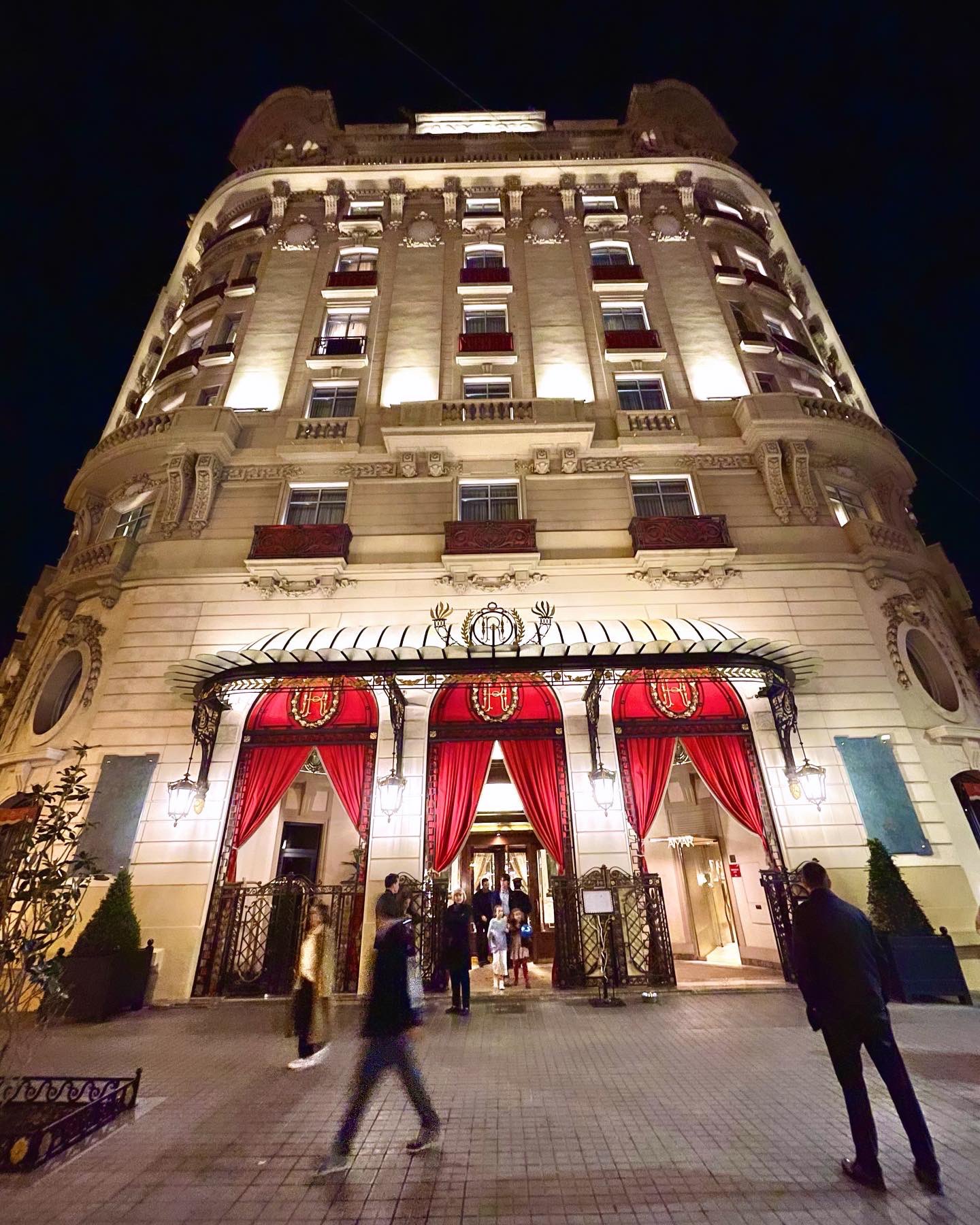
We started in Barcelona, a city I’ve been enchanted by (from a distance) since 1994, after seeing the Whit Stillman movie of the same name.
(Actually, we landed in Madrid, grabbed and excellent eclair and coffee at LHardy, and then bombed around Mercado San Miguel for an hour or so before catching the very fast train to Barcelona the same day, arriving just in time to check into our palatial digs at Hotel El Palace (above) and freshen up for dinner on-premises at the Michelin-starred Amar.
The hotel was everything its name suggested: expansive, old and grandiose, with an eye-popping lobby and solicitous staff, we couldn’t have been happier with our choice. It is also a bit off the beaten track (a half-mile or so from La Rambla), but in a nice neighborhood full of sights and sounds of the city, but also quiet, with a couple of hipster coffee bars on the block, and good shopping just minutes away. With this kind of overture provided by the hotel, Barcelona’s opening act would have to be a showstopper, and unfortunately, Amar, for all of its performative appeal, was not.
Amar checks a lot of boxes: the room is as comfortable and modern as its surrounding hotel is classic. Service was exemplary and there was no faulting the provenance of the seafood.
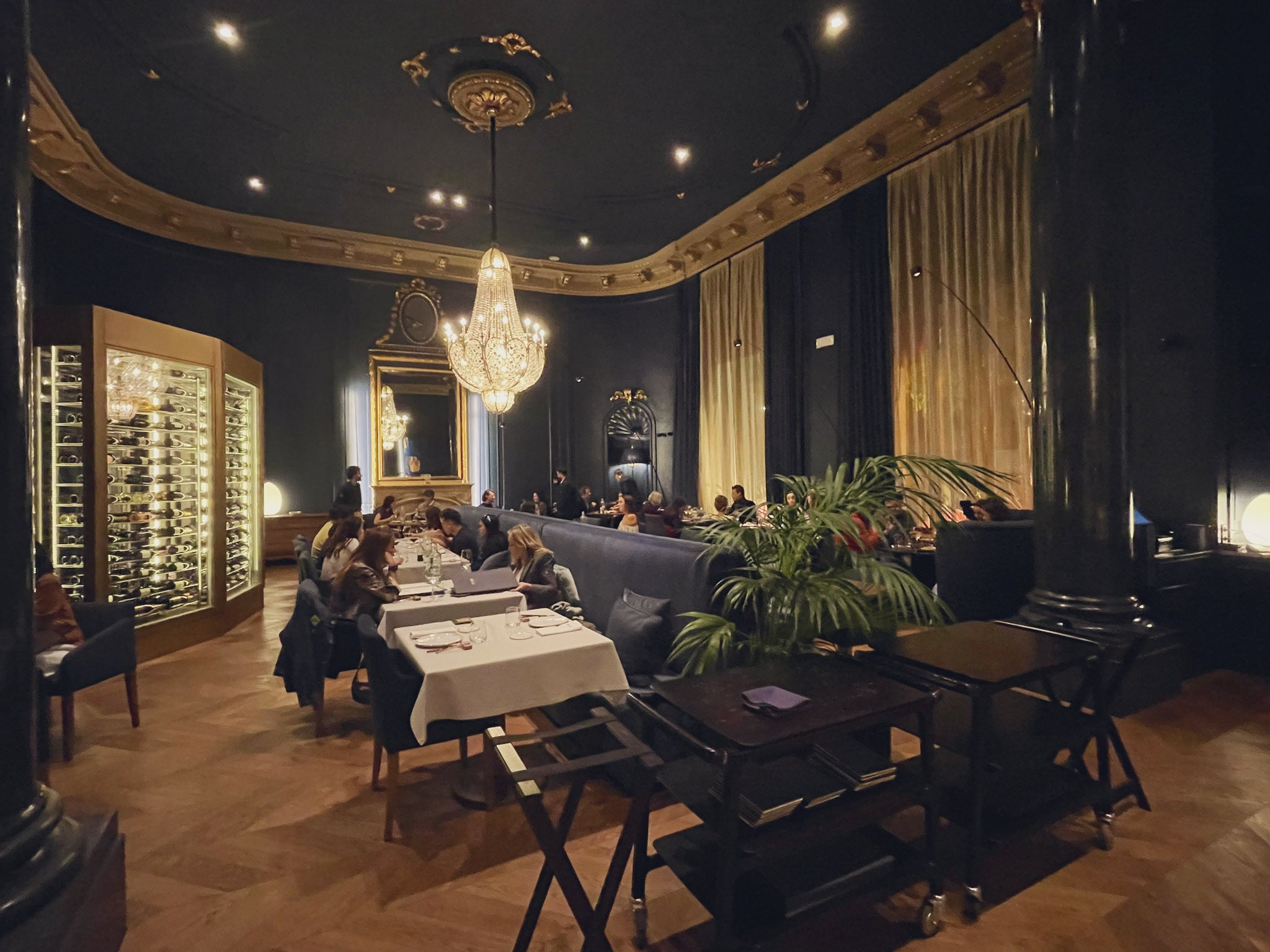
What it seemed to lack was sense of place or warmth, or anything evoking the city it claims to represent. As sparkling as our oysters, and as flawless the fish, it was a meal that could’ve been served in a thousand restaurants around the world. Indeed, we’ve eaten such a meal, a thousands times. The only things that change are the accents of the waiters.
At the risk of sounding like a broken record: Michelin stars are more reliable in Europe than anywhere else, but still need to be taken with a bit of brine. A Michelin one-star in a European capital will have a certain standard of accoutrements and service, and often a menu more predictable than a Waffle House.
Carpaccio to crudo, caviar service, innovative (?) oysters; a little crab here and a free-range there — the progression of courses (straight up the food chain) is so similar they might as well be AI generated. This is not to say the food wasn’t top-shelf, only predictable. And we didn’t travel 5,000 miles to feast on the familiar.
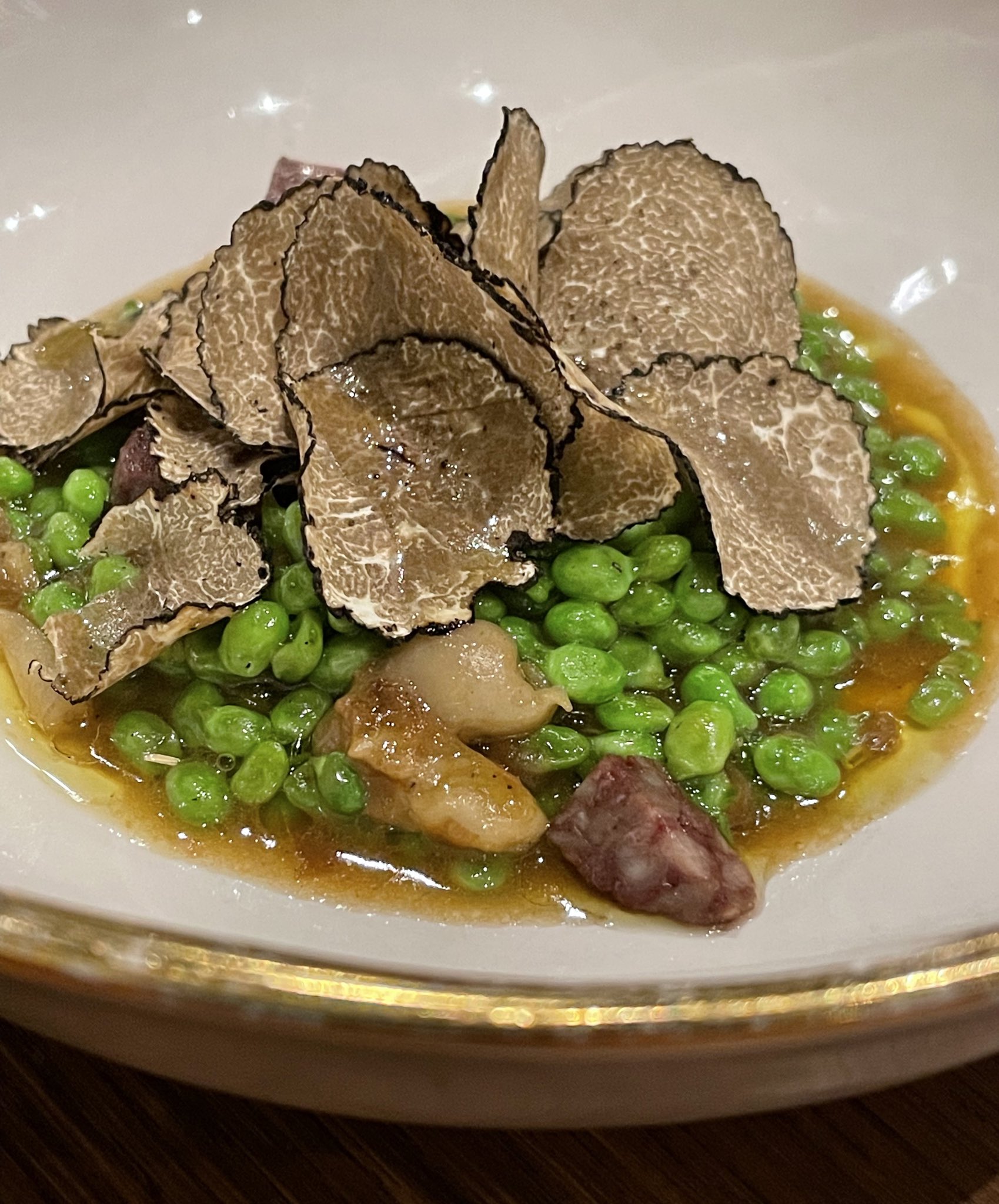
To be fair, certain dishes did command respect: Peas with cod tripe and Catalan black pudding (above, adorned with truffles which brought nothing to the party); white beans with tuna and pancetta; and red prawns tasting like they had leapt straight from the boat onto our plates:
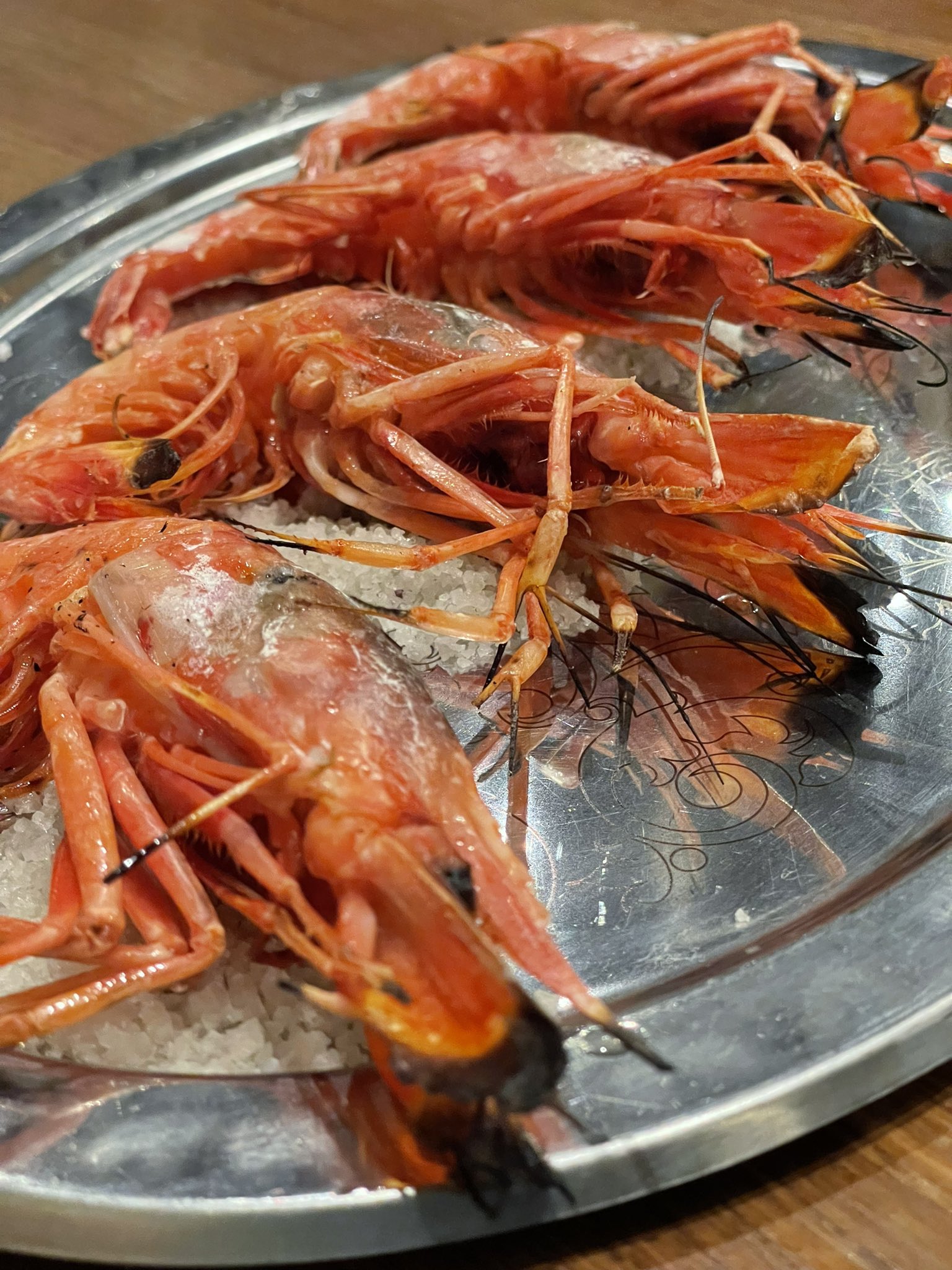
Most of it felt like gussied-up peasant fare, and when the formula progressed into high-toned gastronomia, it wasn’t for the better.
Our classic sole meunière — was draped with the weirdest, whitest beurre blanc we’ve ever seen; spider crab cannelloni proved, once again, that pasta should be left to the Italians; and the most impressive thing about the cheese course was the expandable trolley it came in.
Perhaps is was the jet lag, but we wanted to be blown away by our first bites in Barth-a-lona and weren’t. We left thinking of it as just another exercise in generic dining, brought to you by the Michelin Guide.
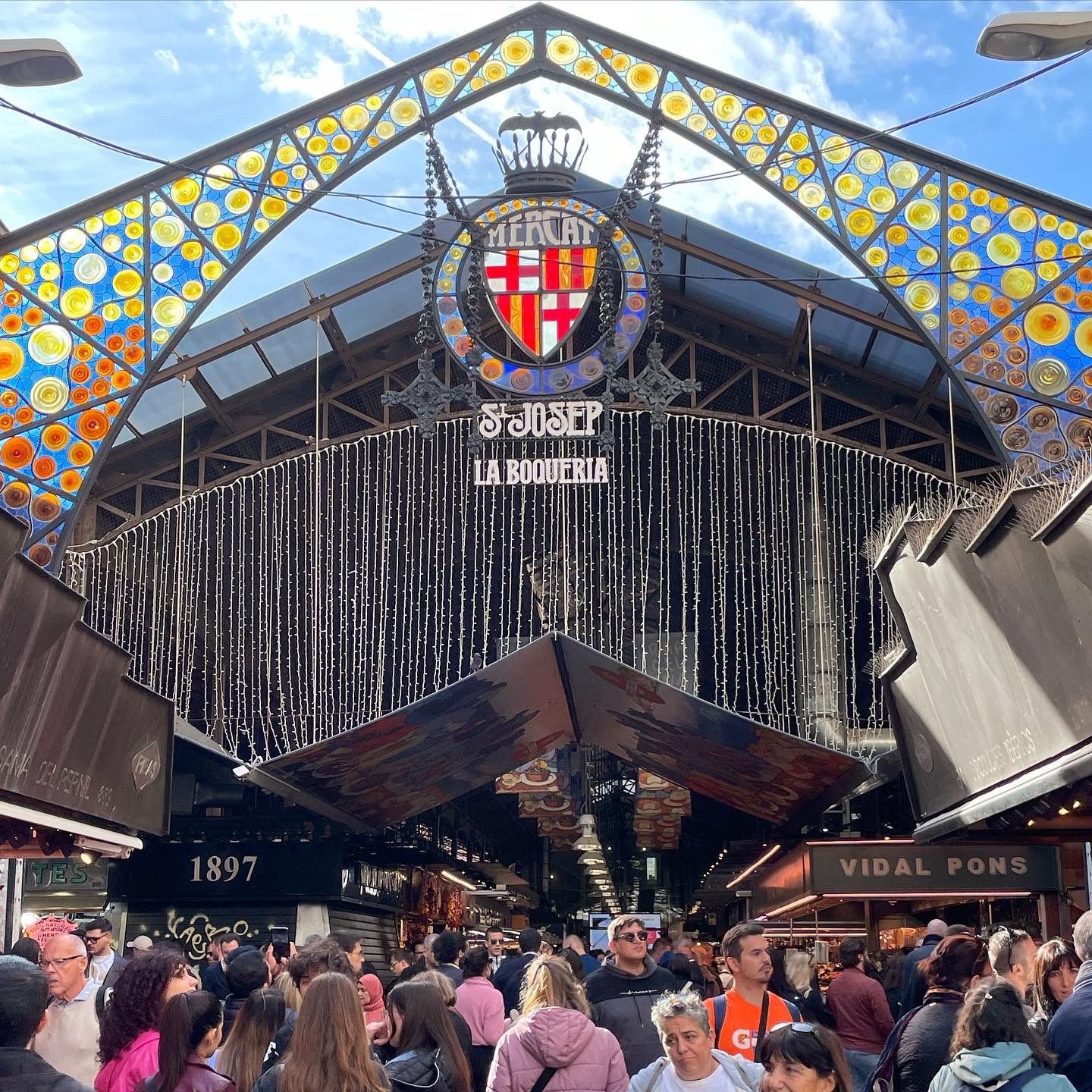
Things got better when they turned less formal the next day. The better parts of two mornings were spent at La Boqueria, with its sensory assaults tempting us at every step and testing our resolve not to spoil lunch by chowing down on everything in sight.
Be forewarned: in the age of Instagram, half of the hoi polloi is there not for the food, but rather to photograph themselves filling their little buckets of narcissism. It becomes a madhouse after noon, so get there at 8 am, so you can cruise around (and chow down on your own, personalized Spanish food crawl) for a few hours before the selfie crowd shows up.
The good news is: this being Spain, no one will bat an eye if you want a cerveza at 10:00 am:
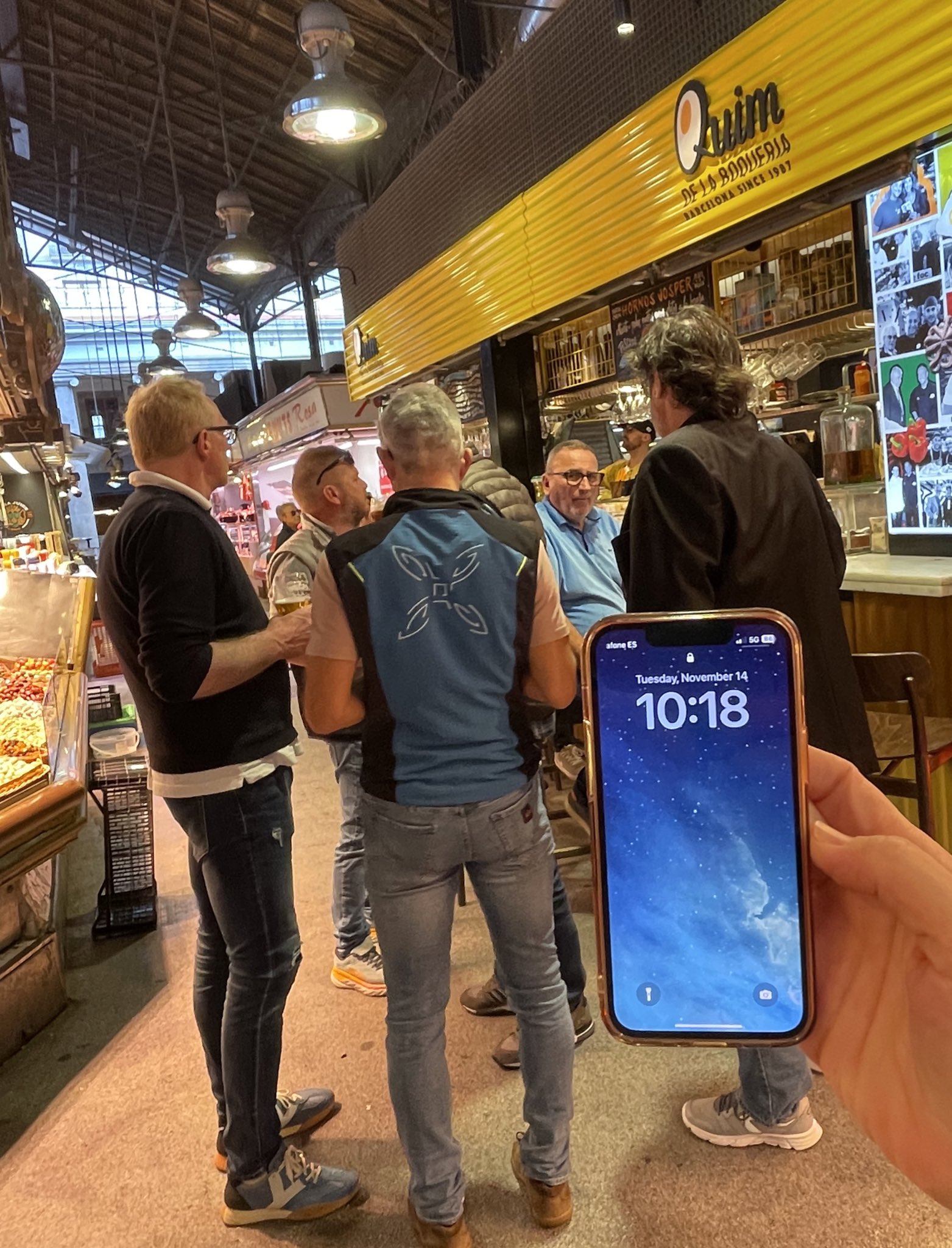
On day one, we stuffed ourselves silly with jamon:
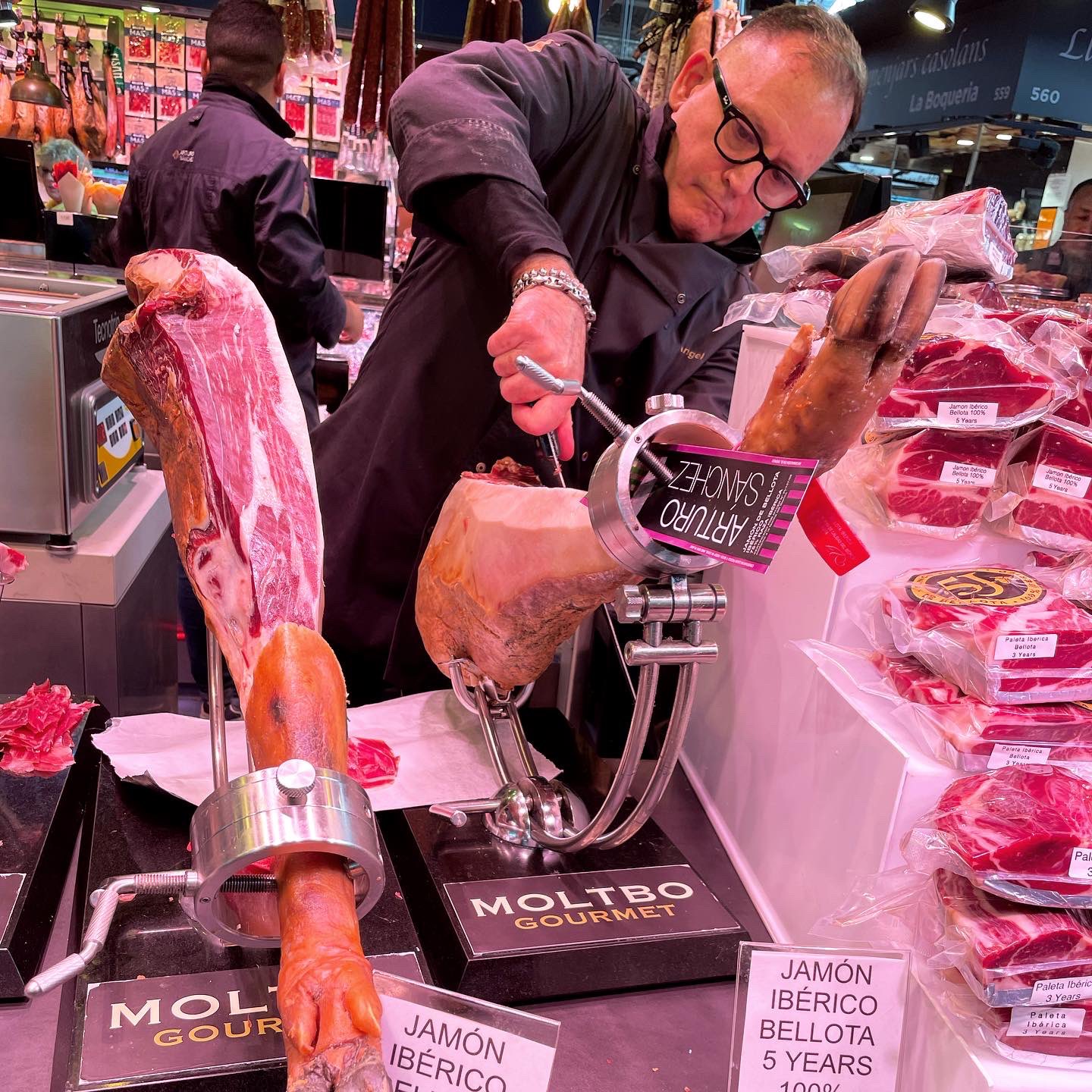
By day three, we strapped on the blinders and made a beeline to El Quim before a hundred other vendors could tempt us with their wares.
Think of the world’s most hectic lunch counter, located in the middle of one of the world’s most famous urban markets, and you’ll get the sense of Quim’s cacophony. Only in this case, they’re serving patas bravas and croquetas instead of pancakes and hash.
Quim has been called the best Catalan tapas in Barcelona, high praise indeed from no less an expert than Gerry Dawes. What seems intimidating at first (you hang around the counter waiting for a seat(s) to open up) becomes less so as soon as you catch one of the waiters’ eyes and are directed to a stool, then are handed a one-page menu which will fight for your attention with all of the prepared foods and signboard specials tempting you.
We settled on a pork loin sandwich with asparagus, toothsome deep-fried artichokes, eggs with foie gras, and patas bravas for breakfast, forgoing other egg and potato dishes which looked heavenly, but also would have filled us up for the day. Each bite packed a wallop – seriously succulent pork on incredible bread, seared duck liver atop eggs (a belt-and-suspenders approach to richness which will ruin you for bacon and eggs forever), while the fluffy-crisp potatoes were lashed with two competing mayos — one, creamy white, the other possessing serious kick.
Quim is the sort of place you need to go with a group and order a dozen things. Two people and four items don’t make a dent in its delectation. But it is the first place I would recommend to go to any first time visitor, and the one locale I wish we could’ve returned to.
Which is probably something we should have done instead of cruising through the Gothic Quarter to our next venue.
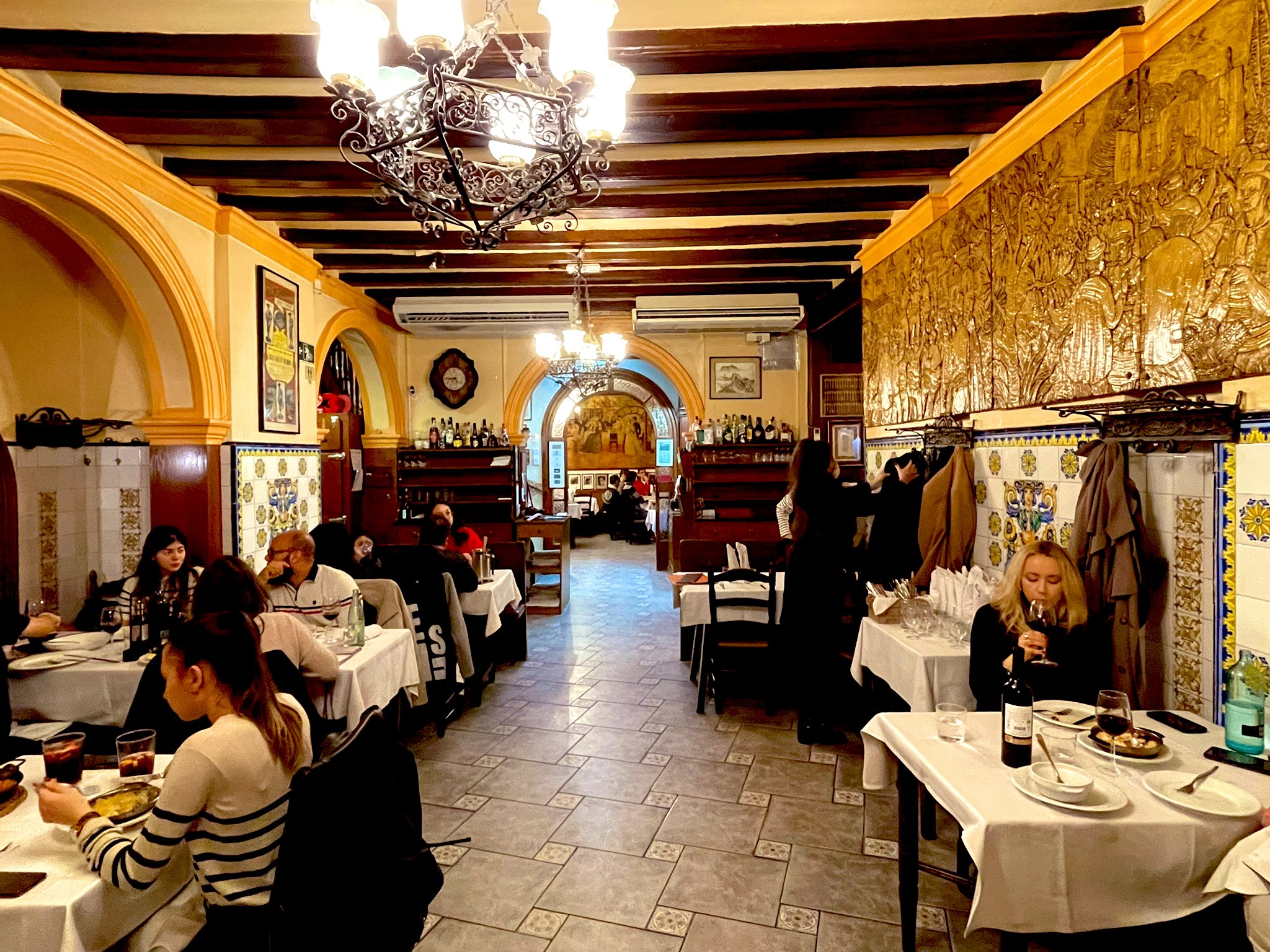
Dinner at Can Culleretes (the second oldest restaurant in Spain) was punctuated by a surly teenage waitress and a hostess with all the poise of a hemorrhoid. But the historic rooms were a sight to see and the tariff soft – especially wine, where bottles cost what a glass does in Las Vegas. (This held true in both Barcelona and Madrid, in restaurants both humble and hi-falutin’.)
The food, however (a decent mixed seafood grill, lots of stewed proteins), was one b-flat sensation after the next. Anchovies and olives are everywhere (by day three we decided there must be some kind of law against not serving anchovies with every meal); they put a fried egg on everything; and seasonings are remarkably mild. Anyone who tells you there are similarities between Mexican and Spanish food needs to have their head examined. Mexican food is to Spanish what a habanero is to a bell pepper.
The charms of Culleretes’ famed brandade-stuffed cannelloni also escaped us, and with every bite we kept thinking how traditional Catalan must be the three-chord rock of Spanish food.
But I digress.
Can Solé 1903 redeemed Old Barcelona in our eyes with sparkling paella served by friendly folks who seemed genuinely happy to have us. We arrived a few minutes early for lunch and there was already a crowd outside, pretty much split 50-50 between hungry natives and tourists:
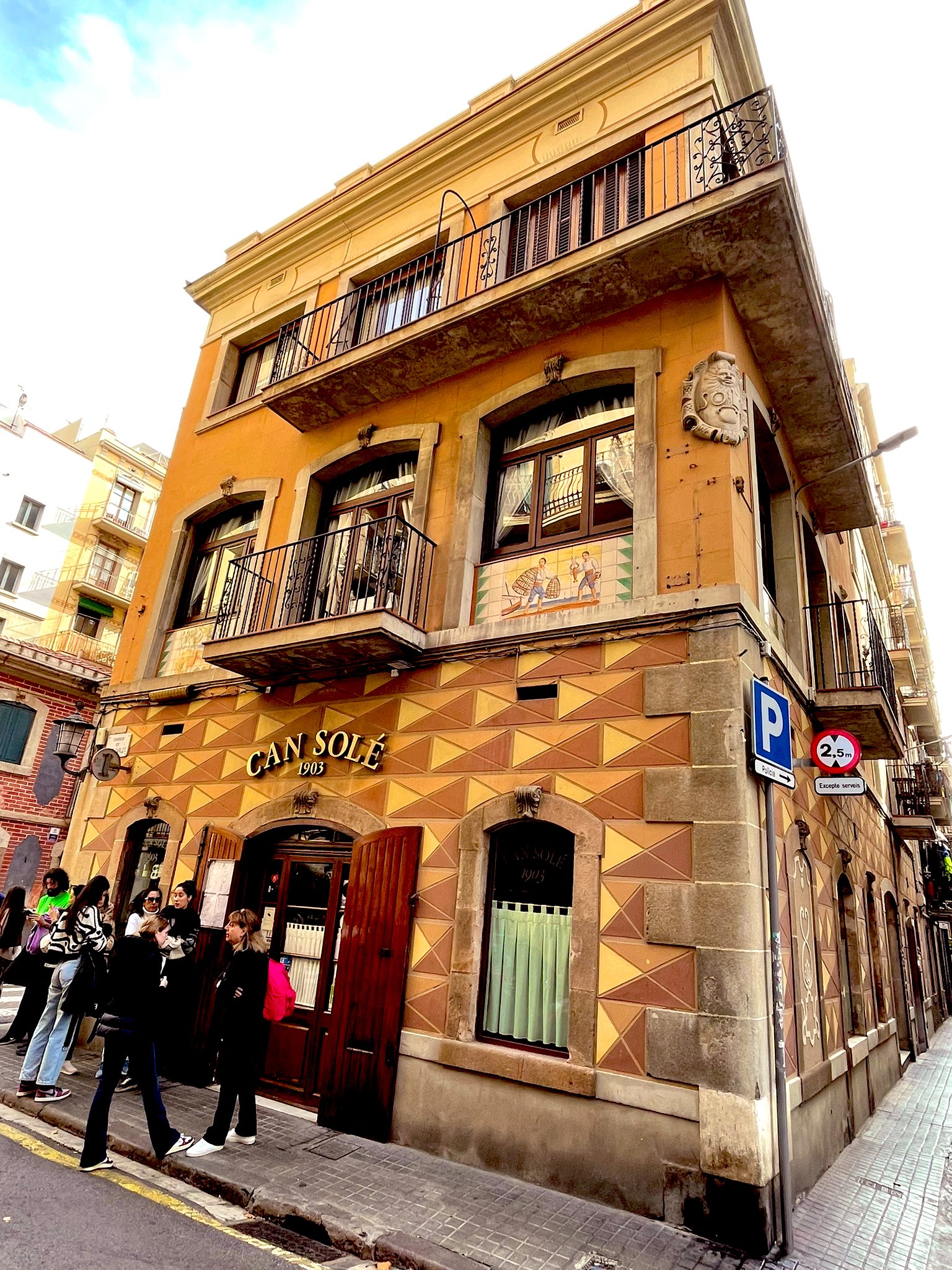
We booked on-line about a month earlier, and, as soon as the doors opened, were shown to the best seat in the house, right under the curtains in the picture above. From there we could watch the steady stream of patrons and various dishes flying forth from the kitchen — all of it washed down with pitchers of white sangria:
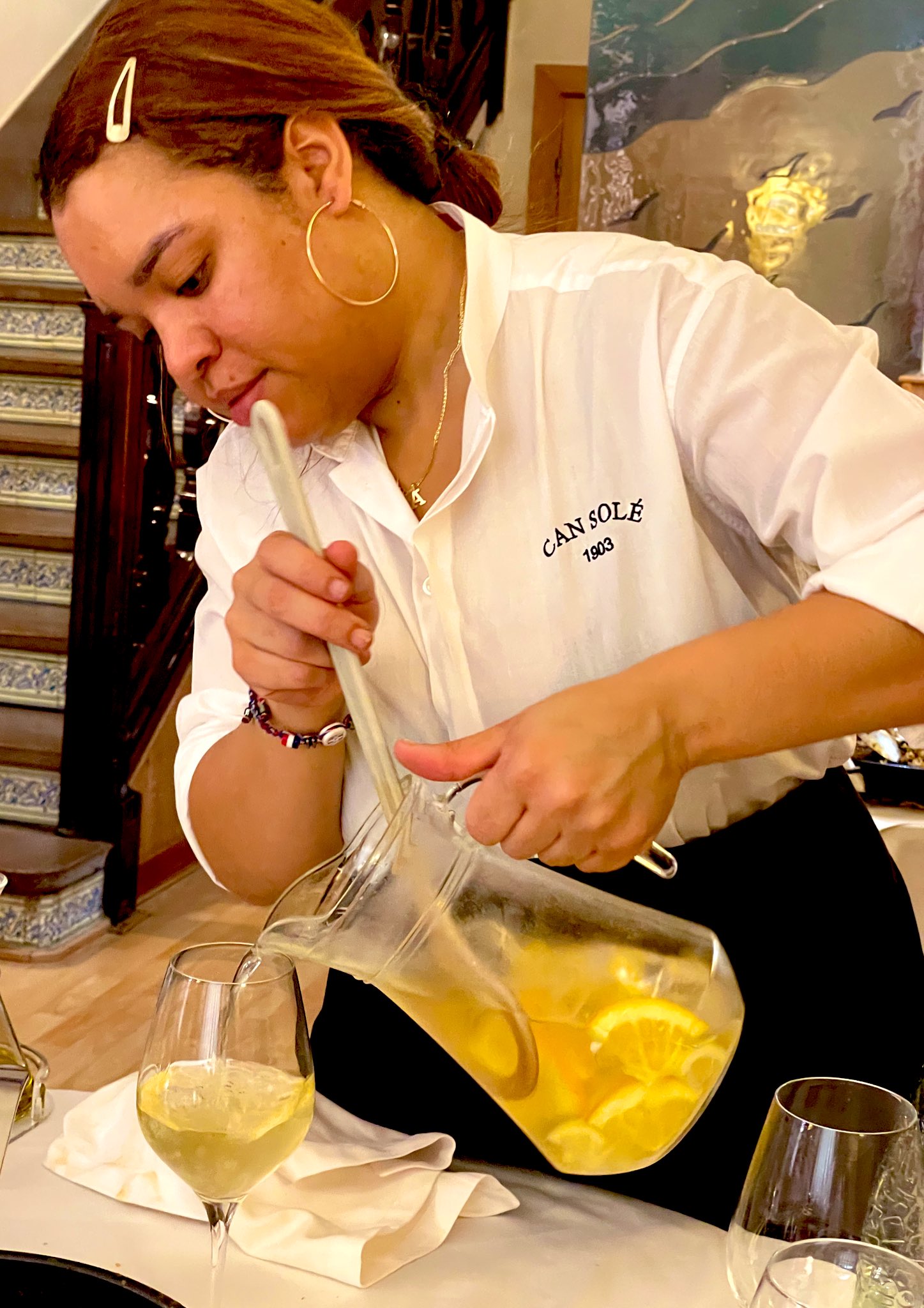
Can Solé is only a block away from the marina so the scents of the shore permeates the food the way it does in all seaside seafood restaurants. (Whether this is an objective fact or simple sensory suggestion is debatable, but briny creatures always seems to taste sweeter when consumed within eyesight of an ocean.)
Our seafood paella was so infused with the sea it was like breathing a spray of salt air with every bite. A steal at 43 euros:
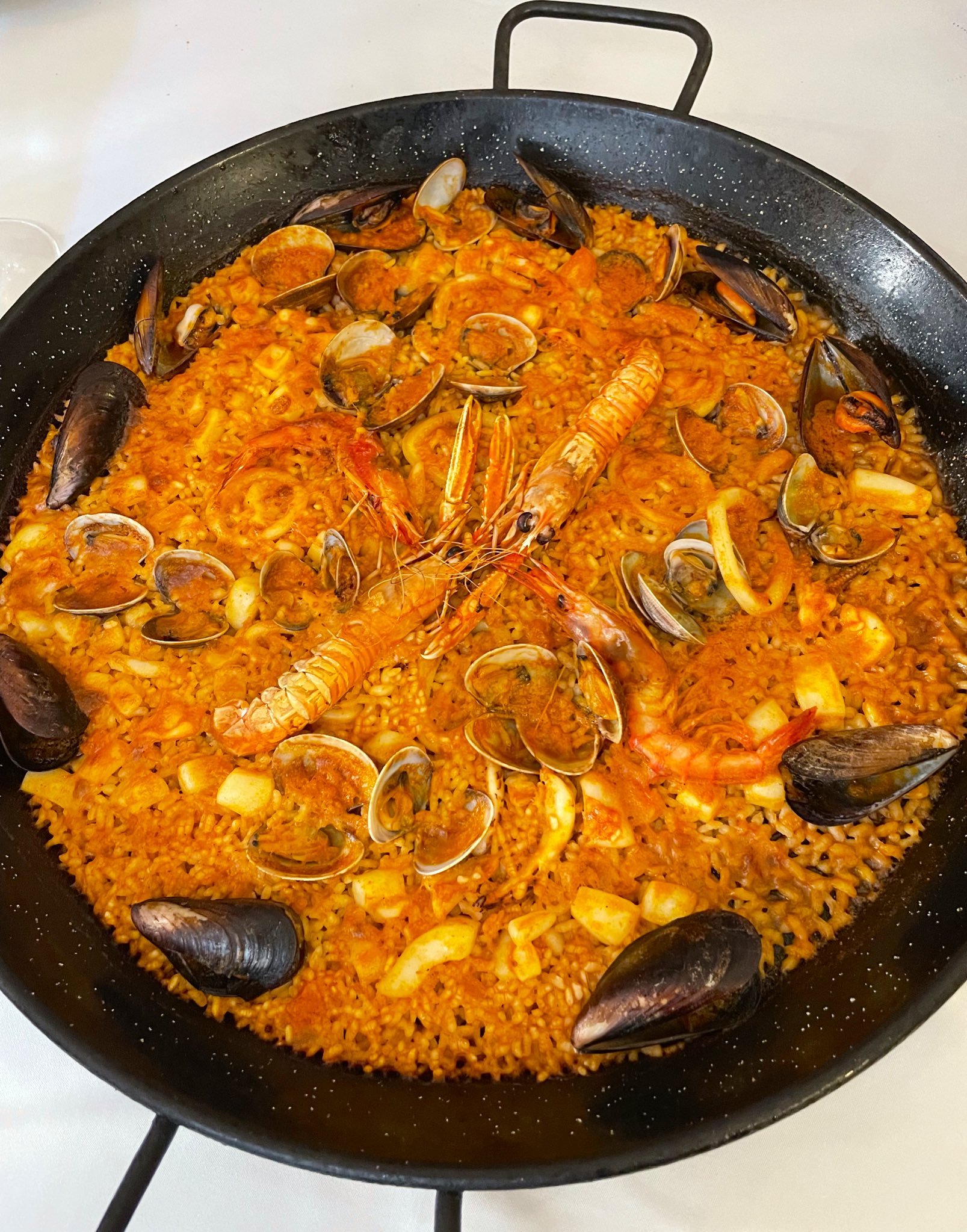
What you’ll find in these old school Barcelona establishments is sticker shock in reverse. The most expensive Spanish wine on the Can Solé list was 34 euros. At Can Culleretes it was 29.50 for a very good Priorat red. Even in fancy joints, the pricier offerings were often well under 100 euros. It didn’t take long to figure out what a bargain wine is in Spain, so our group made no apologies for overspending like a bunch of drunken sailors, since even at their highest, the prices were a welcome respite from Las Vegas’s eye-watering tariffs.
Keep in mind, Barcelona, like Vegas is definitely a tourist town too, but we saw little evidence of price-gouging anywhere, and once you get a few blocks off the tourists paths, you can eat like a local and feel like one too.
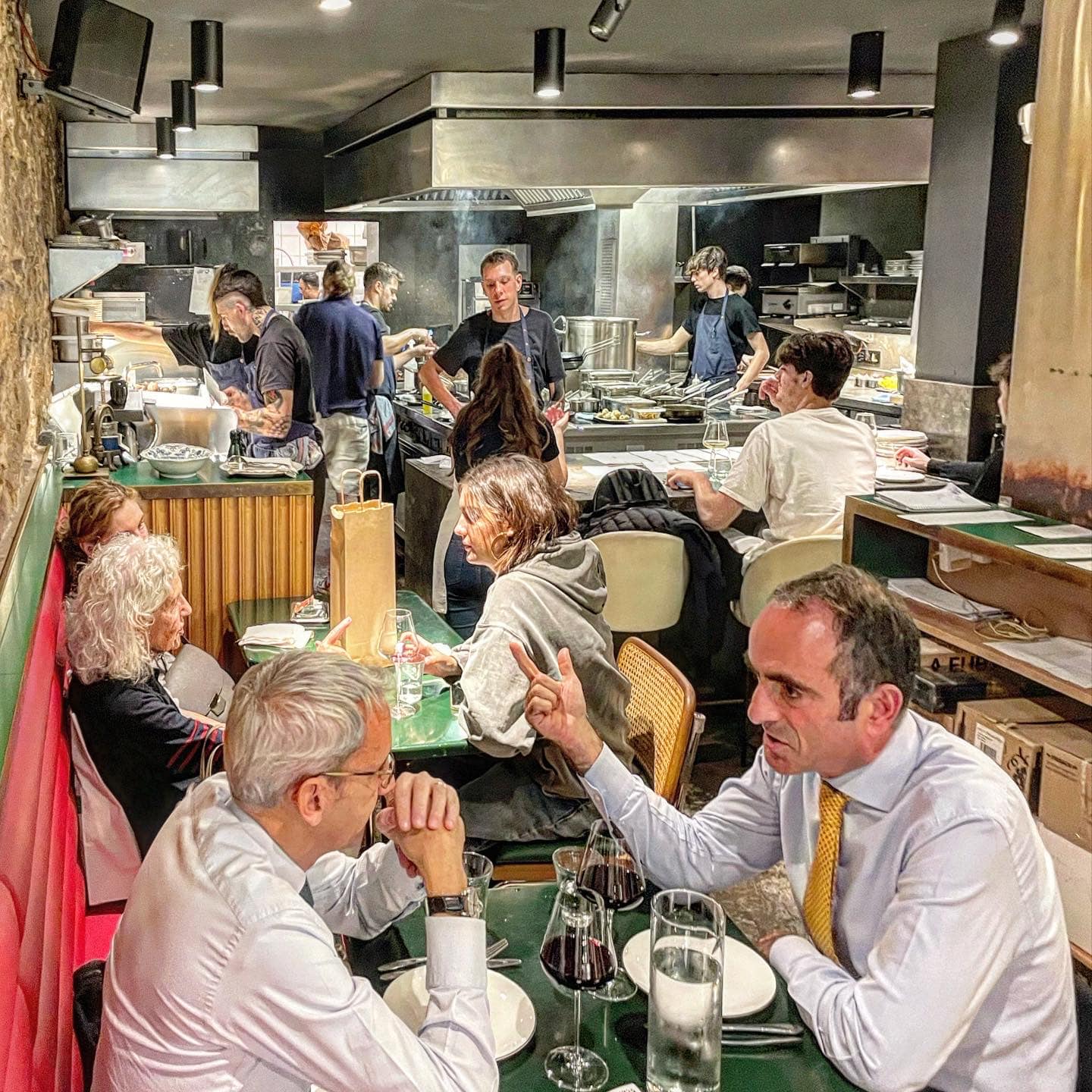
Such was our experience at Gresca — a gastro-pubby hallway of a space so narrow even the vegetables have to enter in single-file. A few blocks west of the tony Passeig de Gràcia, Barcelona’s Fifth Avenue, this shoe box houses a row of four-tops along one cramped wall, and an open kitchen which straddles a second parallel space. The few waitstaff scramble between tables, while in the kitchen, a half-dozen cooks toil away, churning out small plates (not really tapas, despite what the interwebs say) that were the most compelling dishes we had in Spain. Of course, all of the usual suspects were there on the menu, but with a little guidance we crafted a menu of dishes that showed both ingenuity and restraint. A rarity in “modern” restaurants these days.
Rabbit kidneys, sweetbreads, bacon-thin bikini cheese toast, cod “gilda” pintxos, grilled quail, all of it so toothsome we were fighting over the last bites:
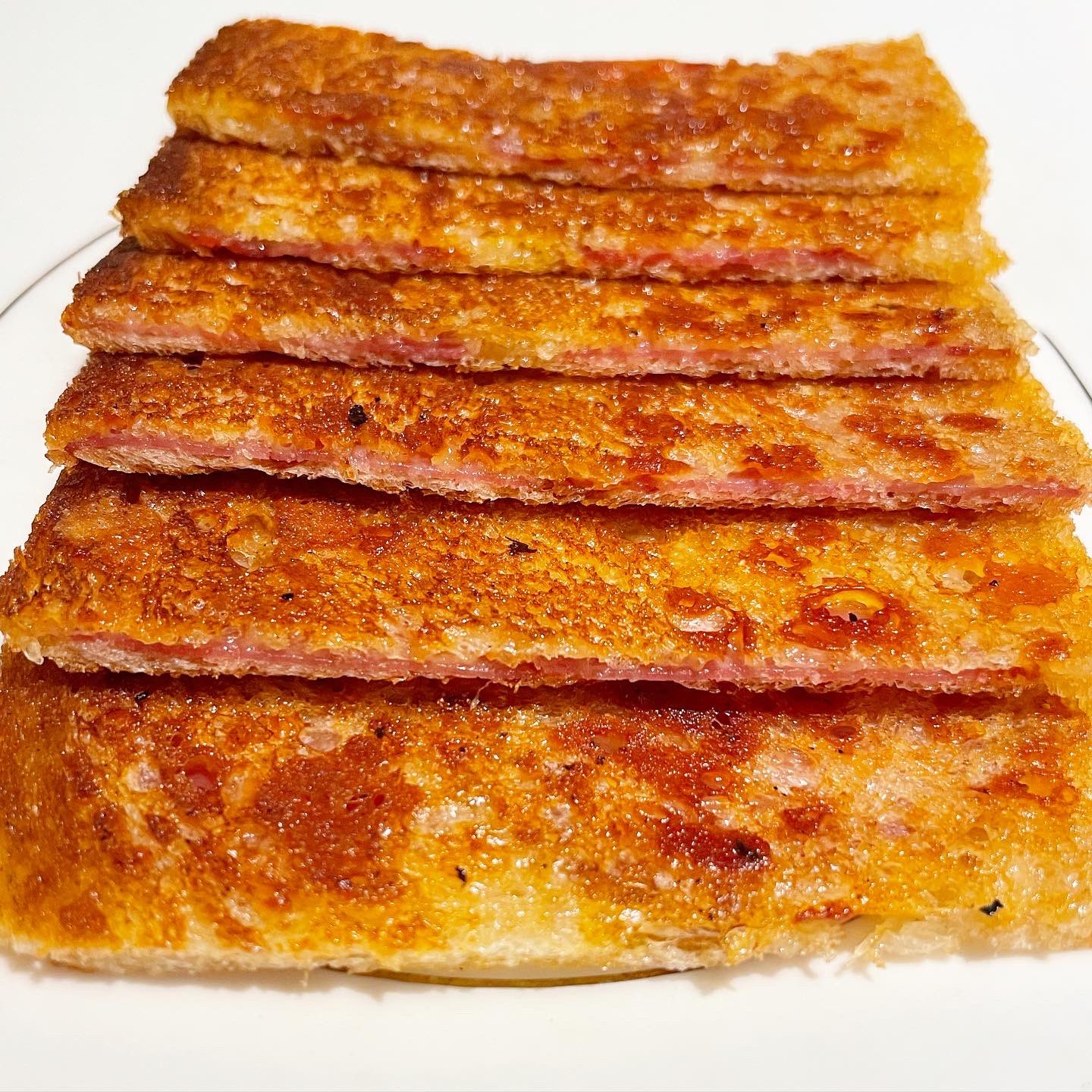
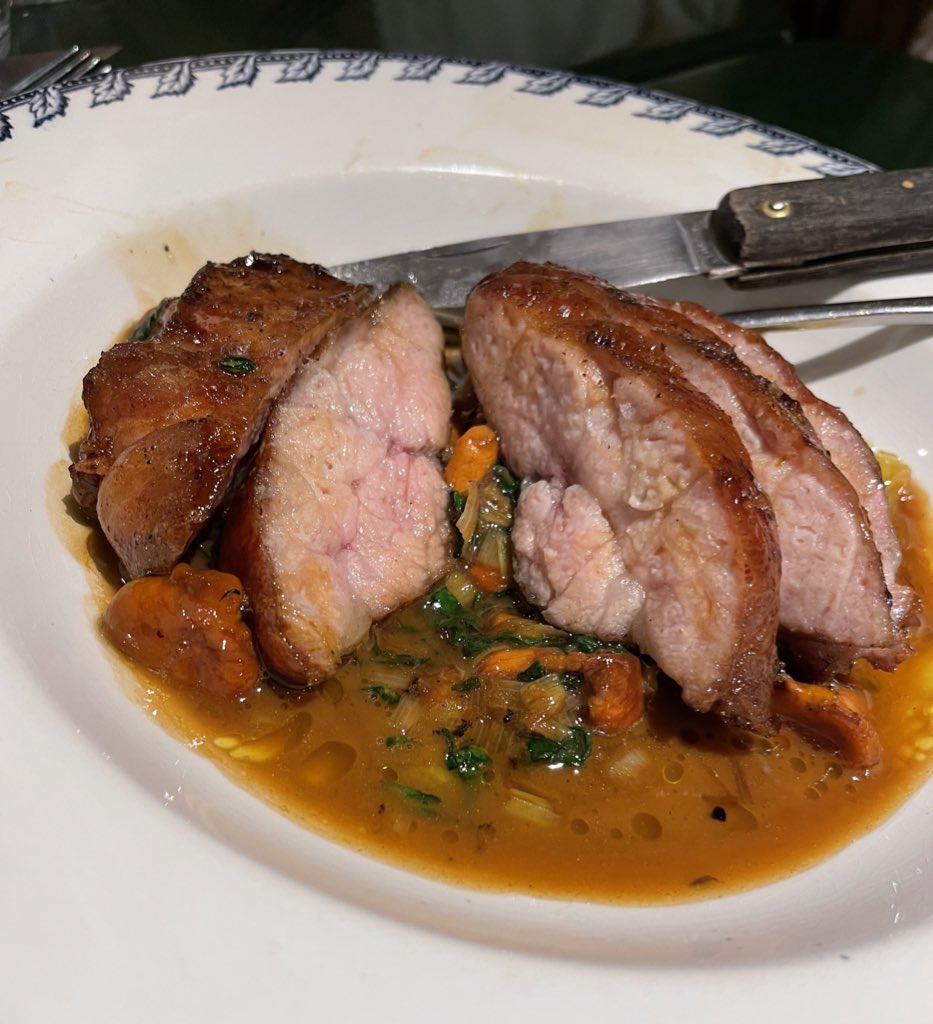
Everything washed down with excellent wines from regions we barely know made by producers we’ve never heard of — which is why god invented sommeliers.
WINE GEEK ALERT: These wines were some of the best of the trip, and we quickly learned Corpinnat is the new Cava. Much as Valdobbiadene has replaced Prosecco, these premium Corazón de Penedès sparklers were tired of being lumped with mass-produced plonk, and have re-made and re-marketed themselves into world-class bubbly.
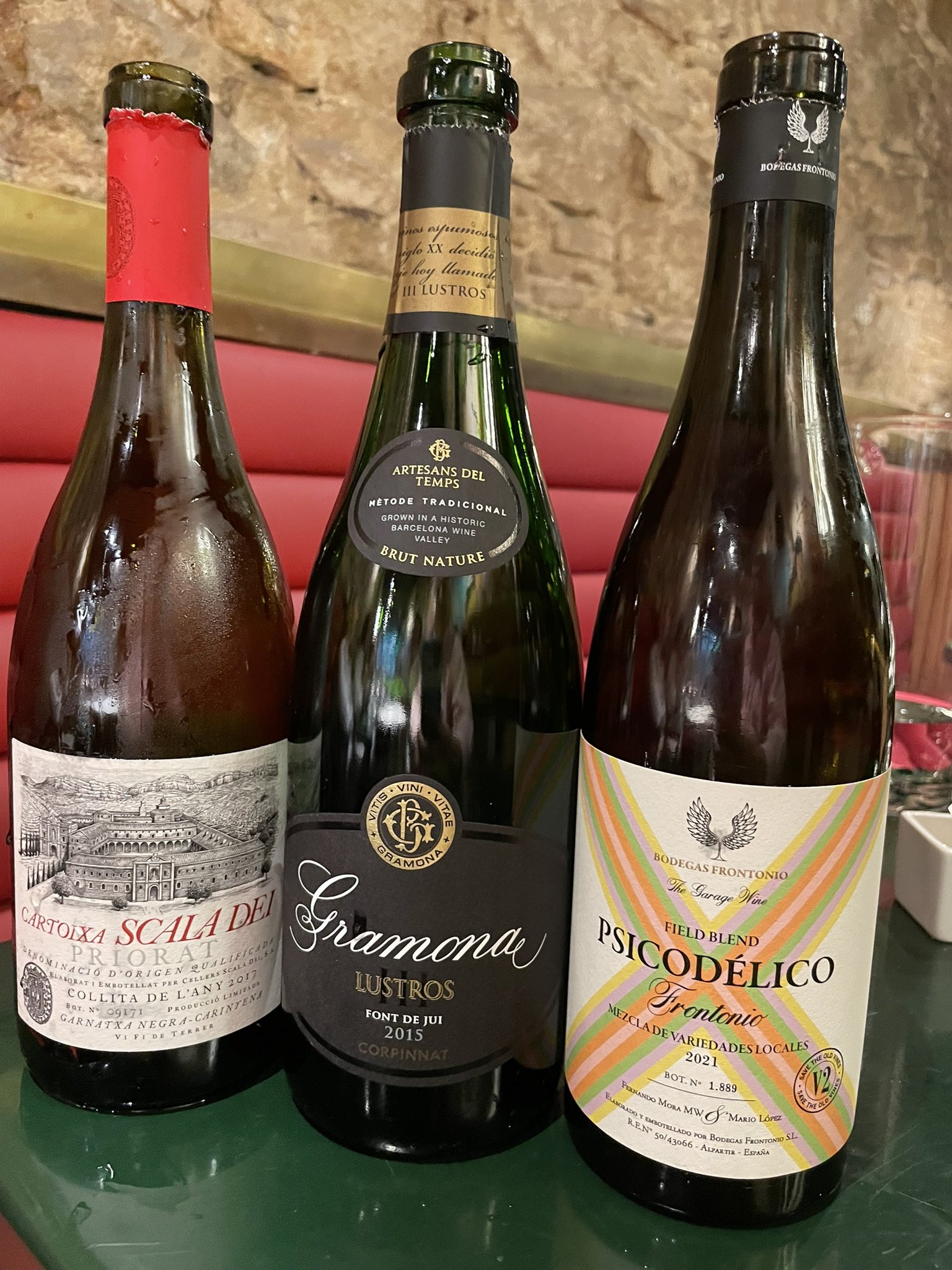
If Gresca made us feel like an in-the-know local, Lomo Alto brought out our inner carnivorous connoisseur.
What resembles a slightly antiseptic butcher shop upon entering, leads up a stairway to a second floor of capacious booths designed for one thing: to showcase the best beef in Spain. Before you get to your dictionary-thick steaks, you’ll first plow through some beautiful bread, three kinds of olive oil, “old cow” carpaccio with smoked Castilian cheese, and some of the softest artichokes known to man.
Then the carving starts and you are transported to a higher level of beef eating:
I am a firm believer in table-side carving…of everything from rib eyes to ice cream. pic.twitter.com/vjCfJVg4WV
— John Curtas (@eatinglasvegas) February 28, 2024
Make no mistake, though, it was an aged steak for the ages. We did a side-by-side of two steaks (a vaca vieja chuleta – beef aged both on the hoof and in the fridge), the other a very lean, 60-80 day aged strip of Simmental beef from Germany. Neither was cheap. (145 euros and 118 euros) together amounting to about $300 of European, grass-fed beef split between four people. As compared to an American steakhouse (remember, we practically invented the genre), I’d give it and A- for food (the Simmental was as chewy as overcooked octopus and not worth the tariff) and high marks for service, despite the room exuding all the hospitality of a hospital. But I’ll remember that steak and those starters for a long, long time.
<<<<<<<<<<<<<<<<<>>>>>>>>>>>>>>>
Was Barcelona worth it after thirty years of anticipation? I wish I could say yes, but nothing we ate was memorable enough to draw me back there.
Not to end on a sour note, but much of the traditional Catalan cuisine left us cold. Bread, stews, olives and anchovies are nothing to scoff at, but when you see them at every restaurant for days on end, the template gets tiresome. Anyone expecting vibrant seasonings, or a little spice with their ultra-fresh ingredients will quickly discover they’ve landed on the wrong shore.
In spite of the gorgeous Gothic quarter, the shimmering seafood, and those steaks, and the tapas of Quim and the precision of Gresca, we left Barcelona feeling there wasn’t much left for us to try.
Before you take me to task, I know all cities are full of surprises, and a single visit barely scratches the surface. Perhaps next time someone like this big guy will show us a range of flavors we didn’t experience.
After all, some of the world’s greatest romances started with a whimper instead of a bang.
This is the Part One of a two-part article.
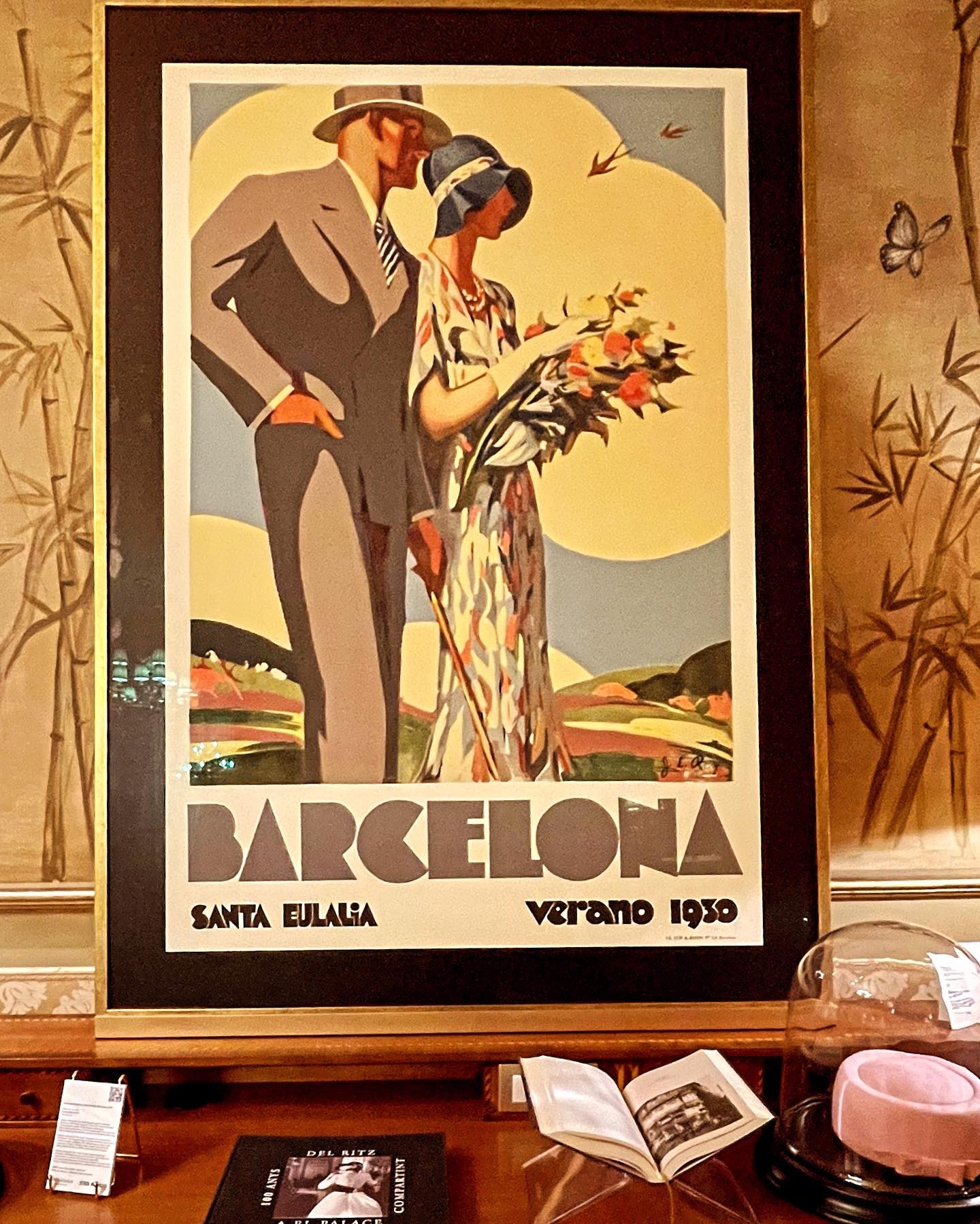
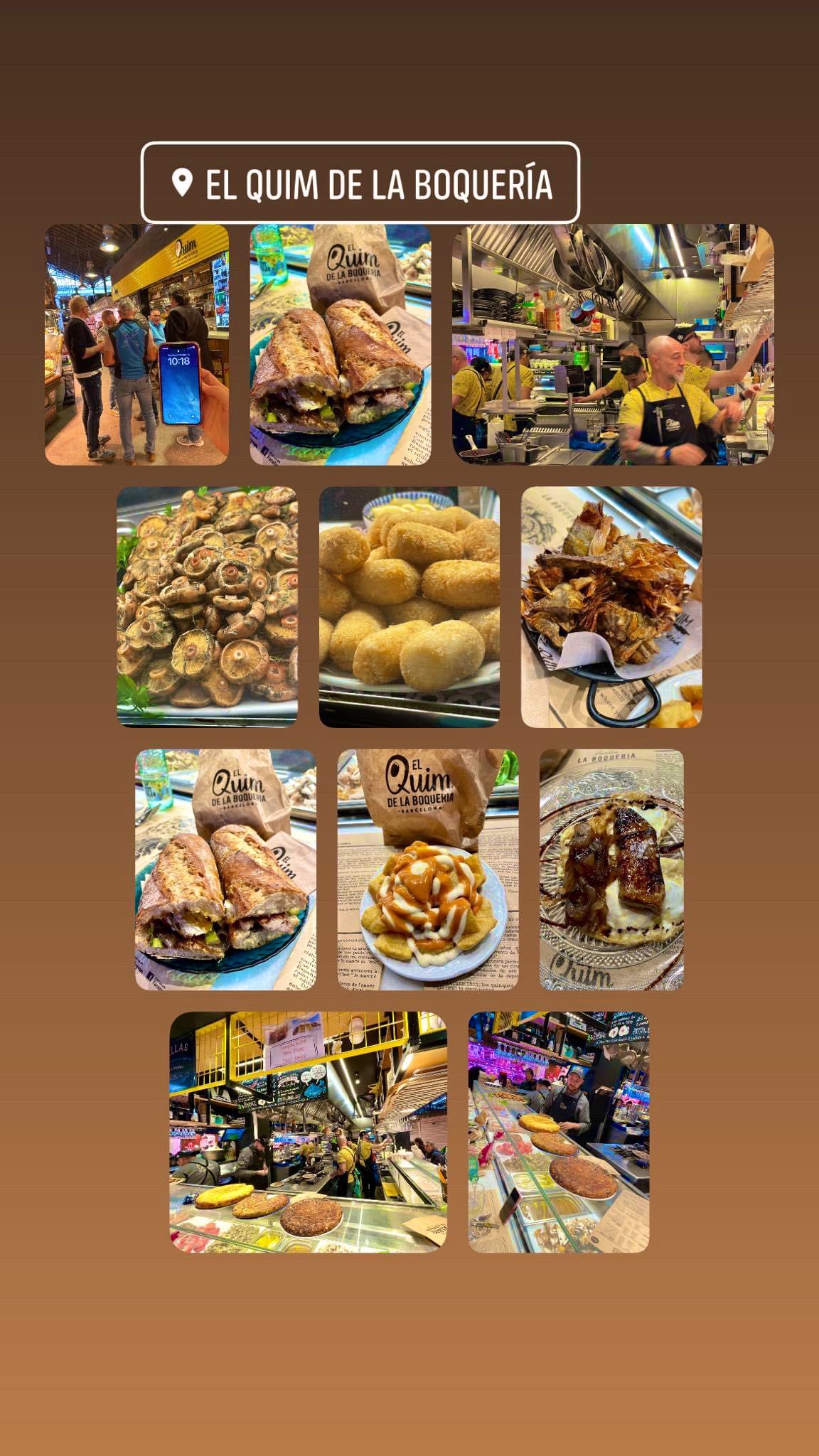
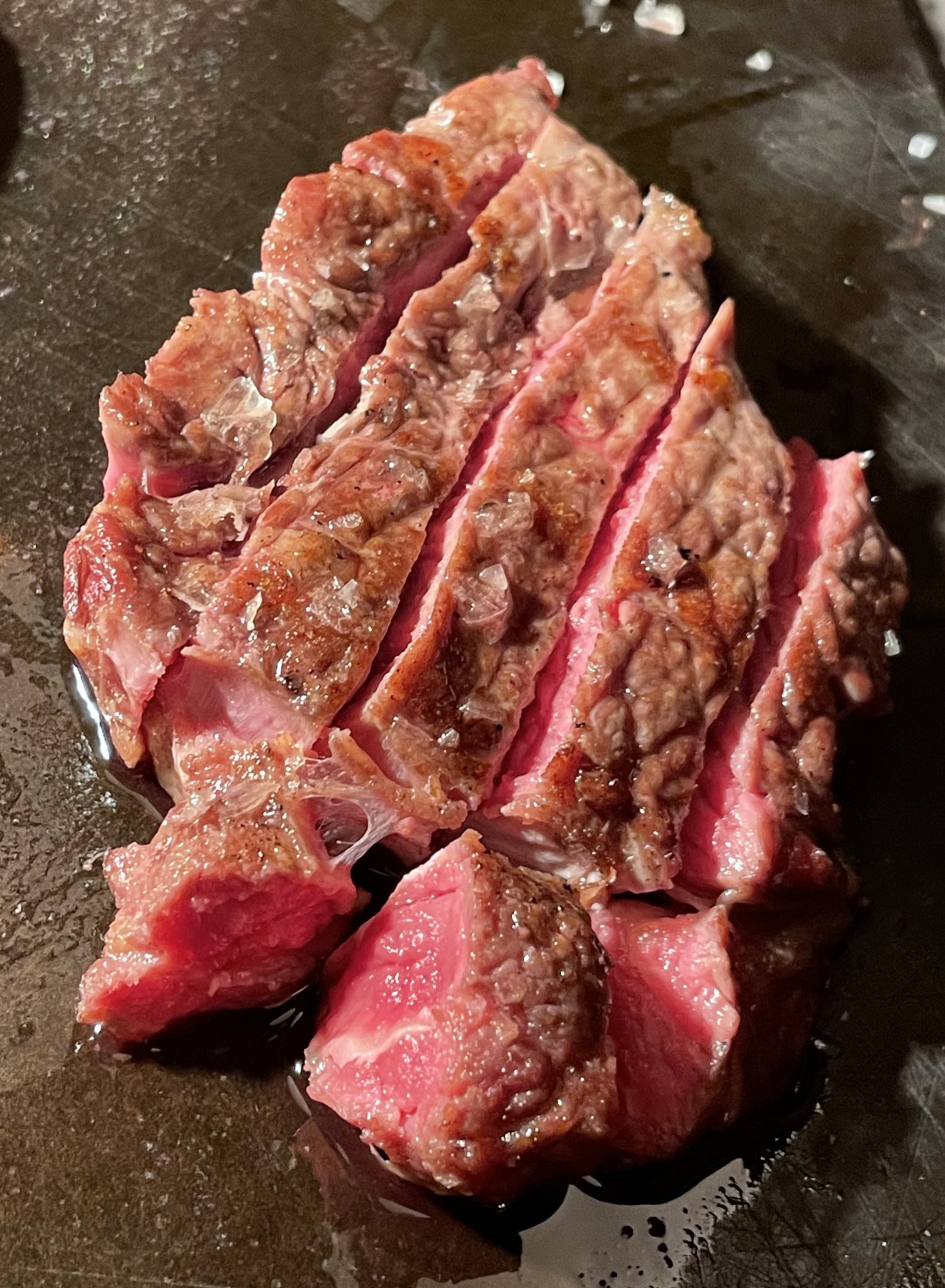
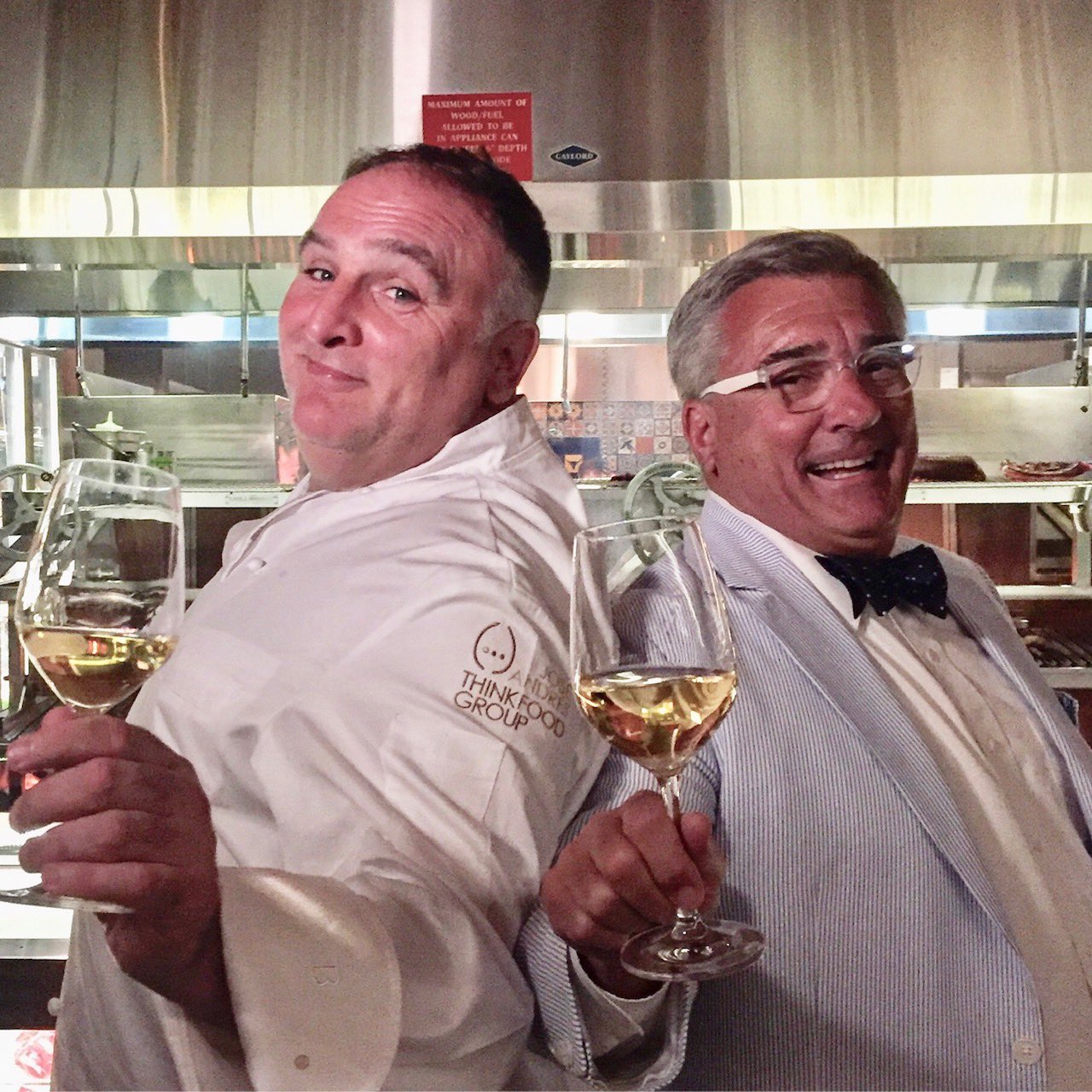

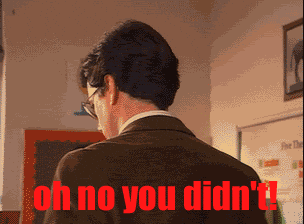
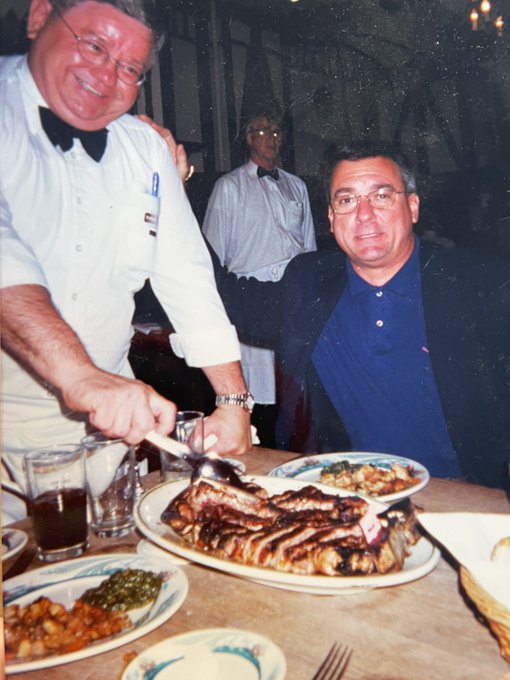 (Obviously hates his job)
(Obviously hates his job) (Iconic porterhouse)
(Iconic porterhouse)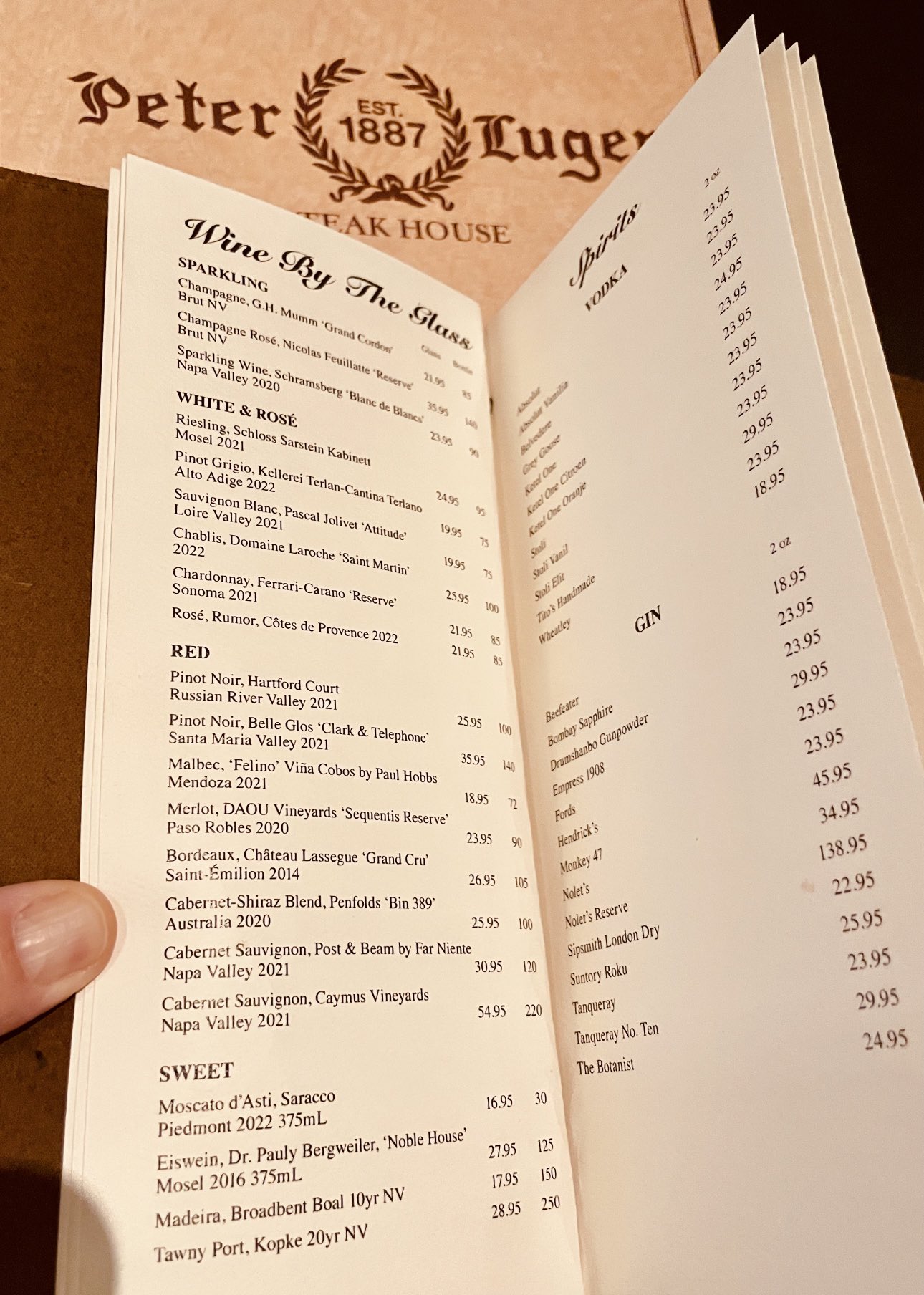 (Finally, a place to go for a $139 shot of gin)
(Finally, a place to go for a $139 shot of gin)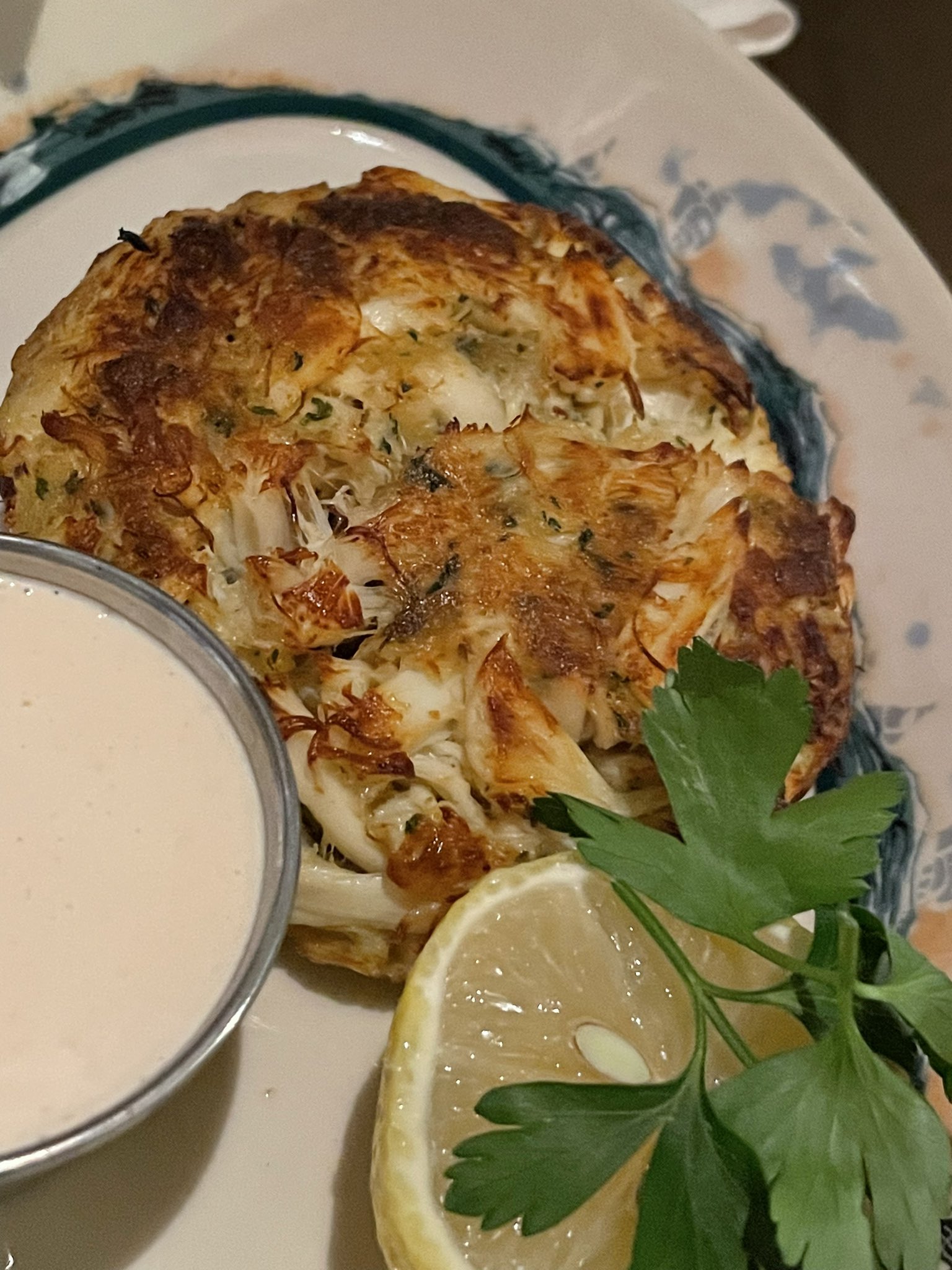 (This crab doesn’t filler round)
(This crab doesn’t filler round) (Just like Grandma used to make)
(Just like Grandma used to make) (Dynamic Duo)
(Dynamic Duo)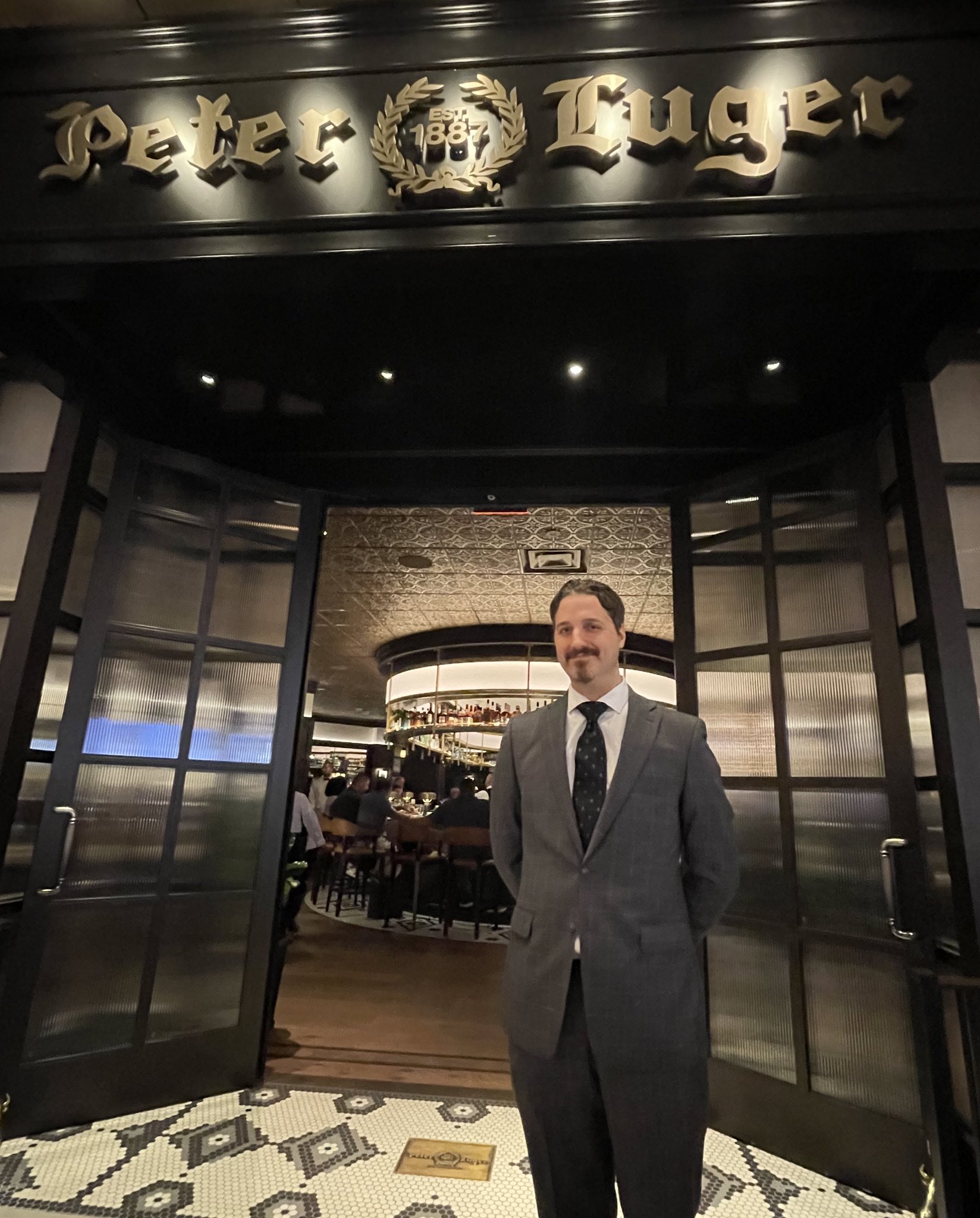 (Super somm Paul Argier is there to serve)
(Super somm Paul Argier is there to serve)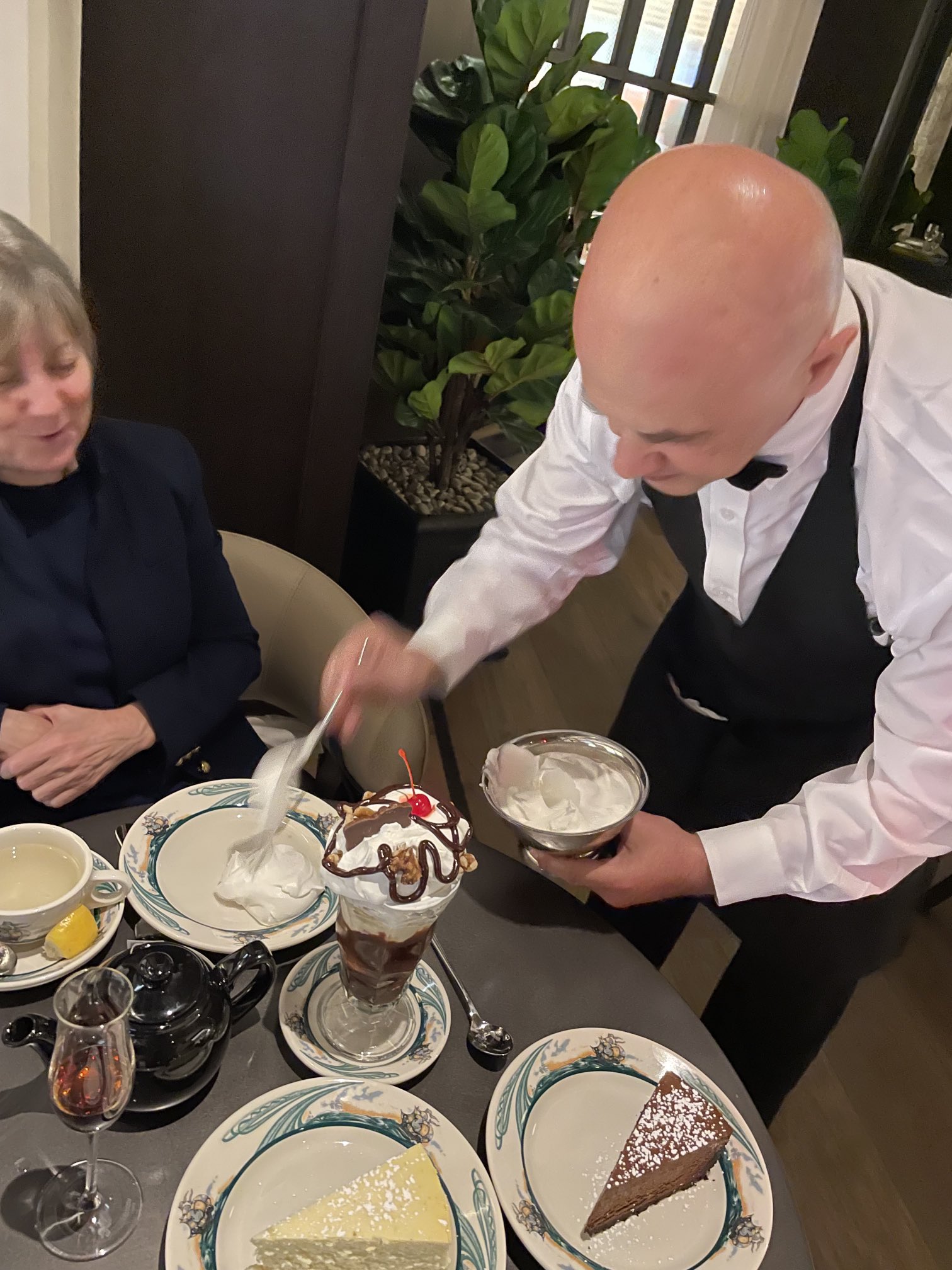 (Mit schlag is German for “more please”)
(Mit schlag is German for “more please”)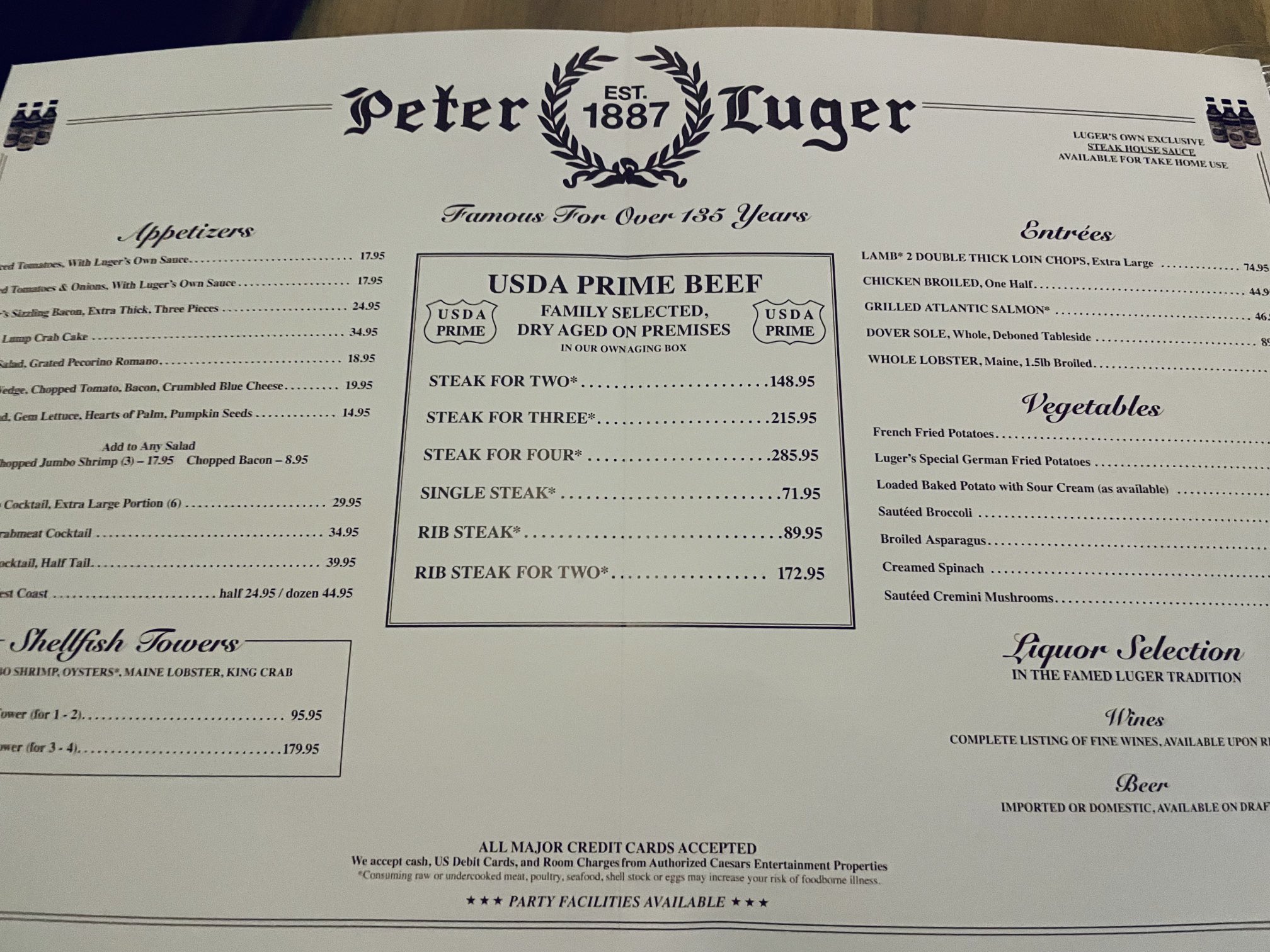
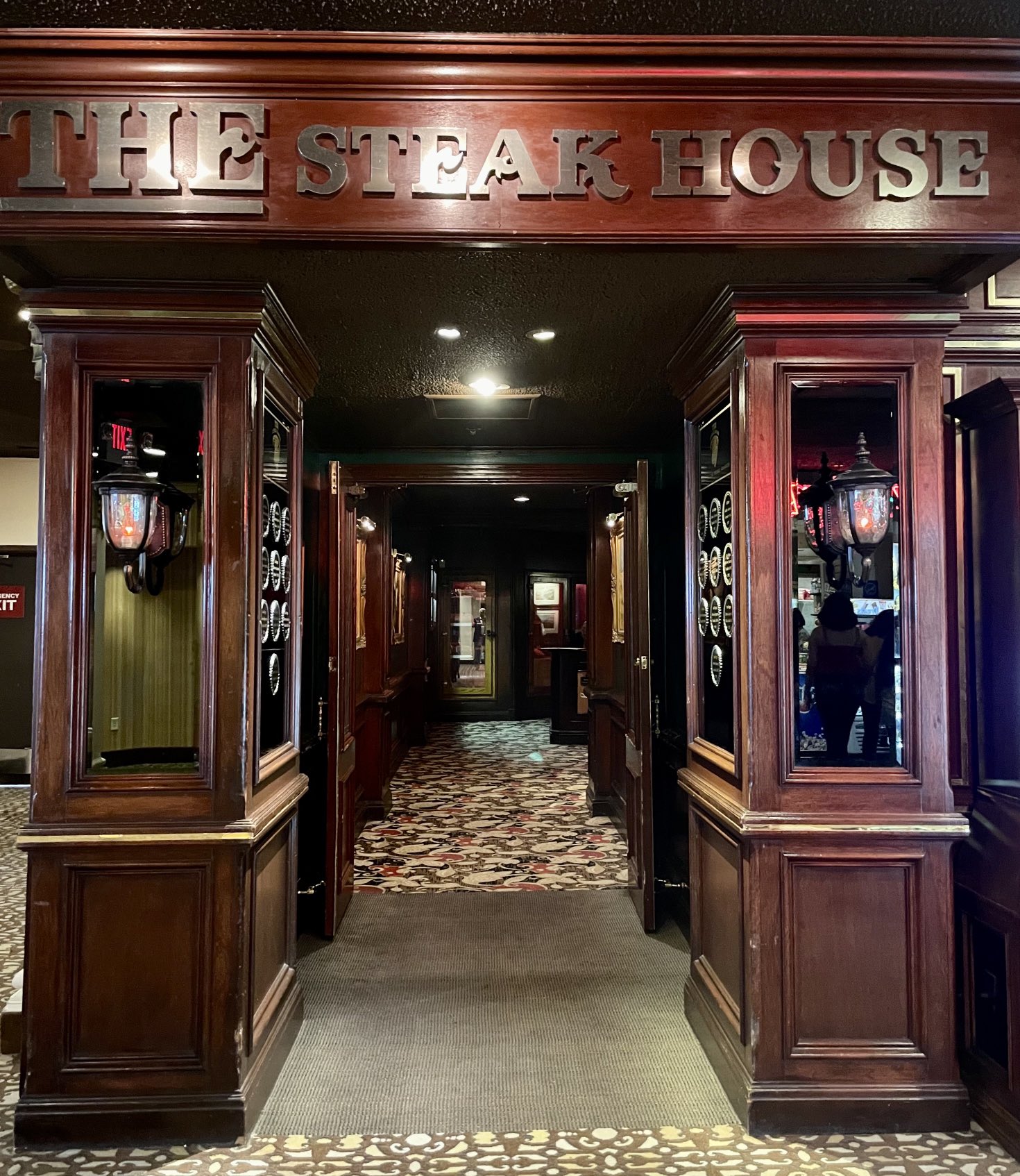
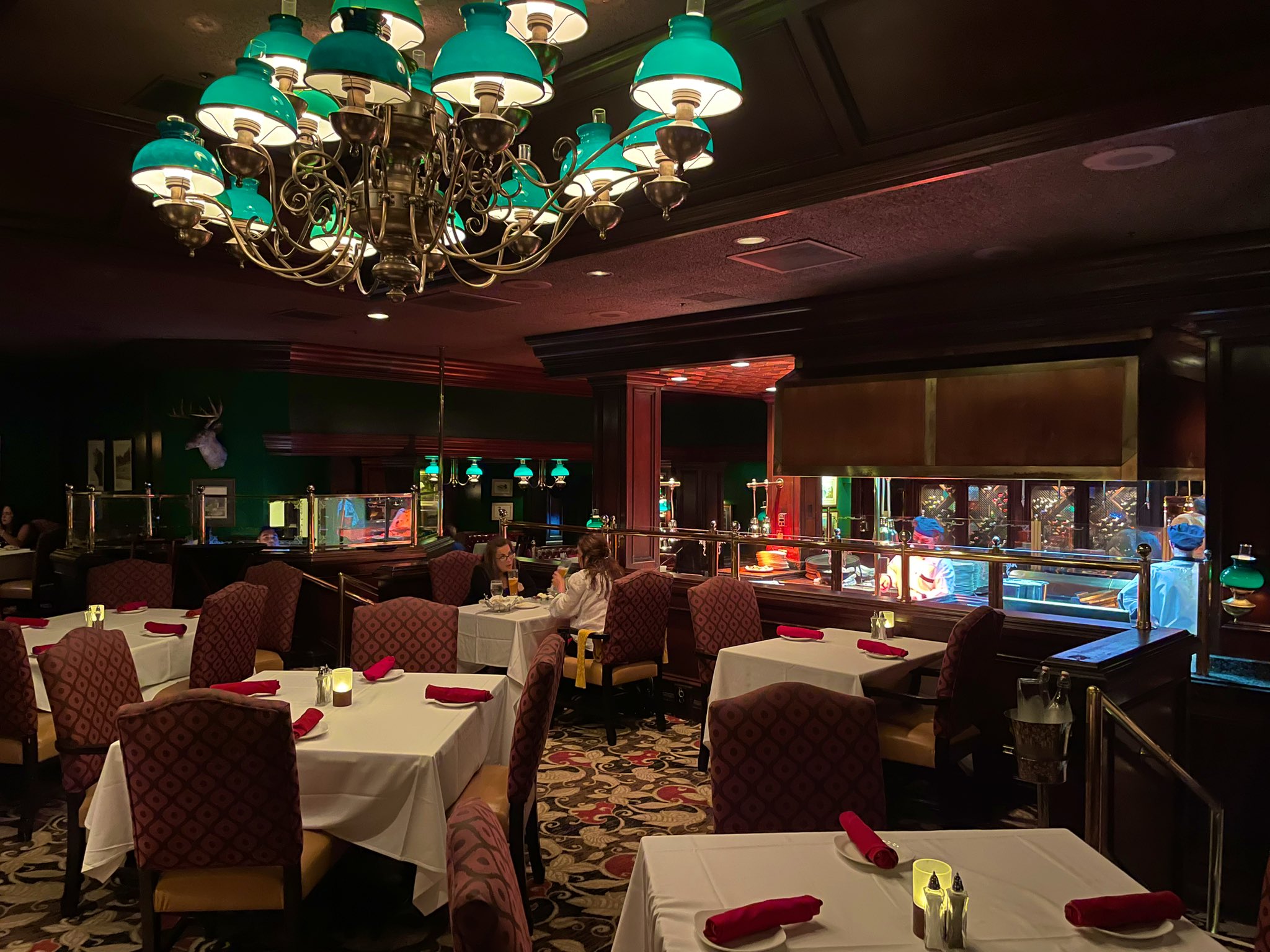 (Never give a sucker an even steak)
(Never give a sucker an even steak)
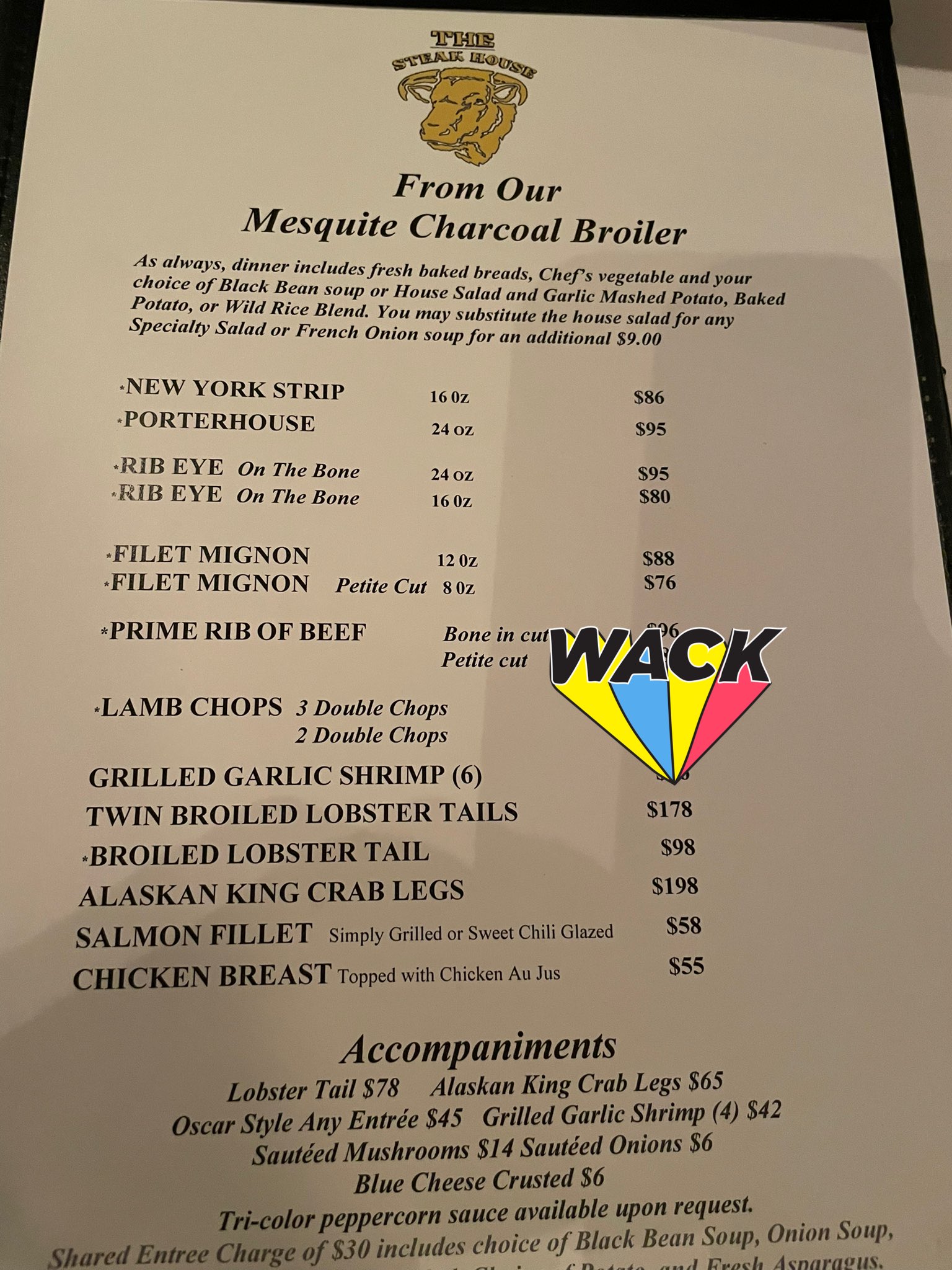 (We have a beef with prices that steak the bank)
(We have a beef with prices that steak the bank)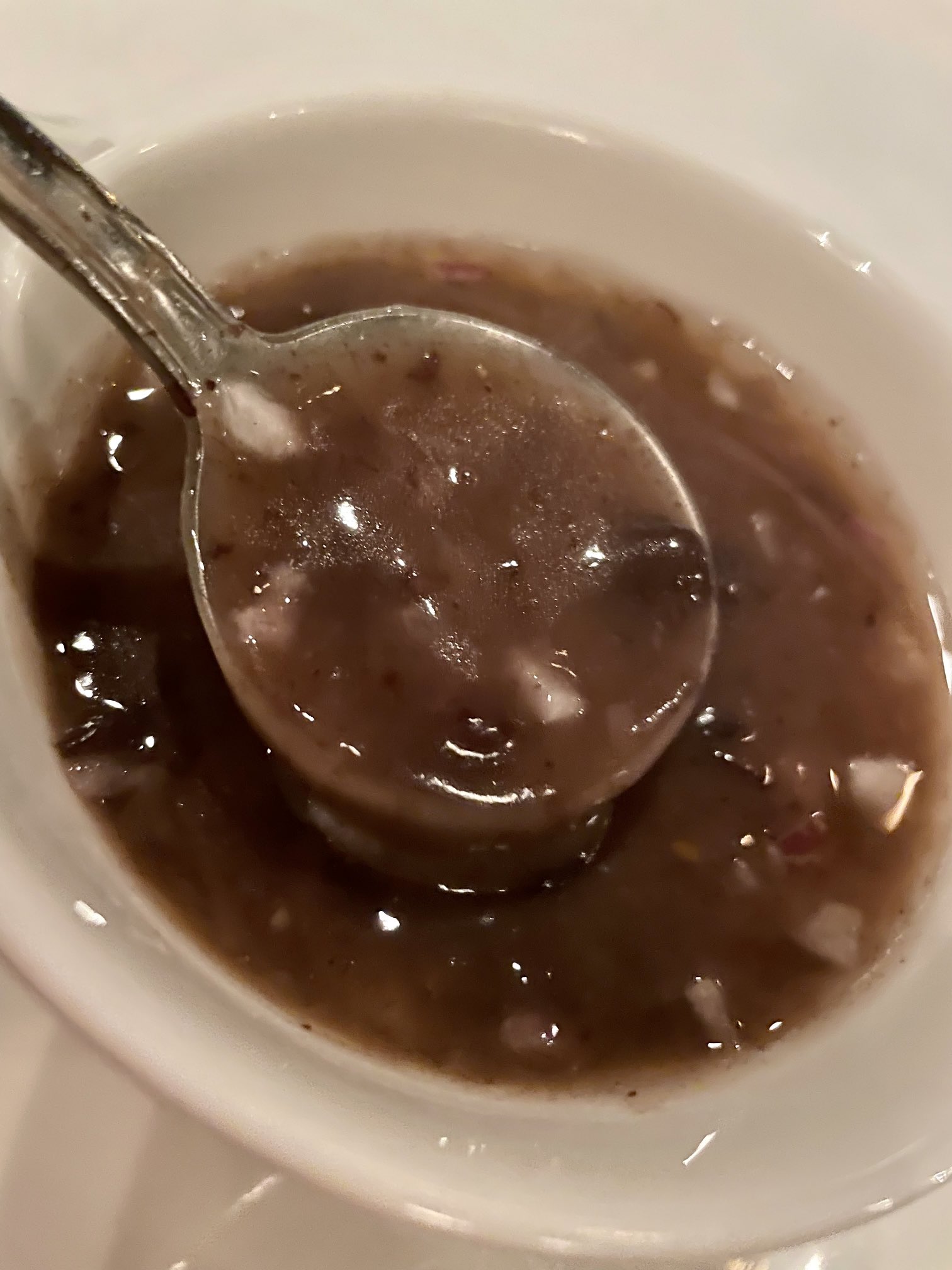 (Cornstarch Circus)
(Cornstarch Circus) (Past its prime)
(Past its prime)
 (Getting crabby at Circus Circus)
(Getting crabby at Circus Circus)